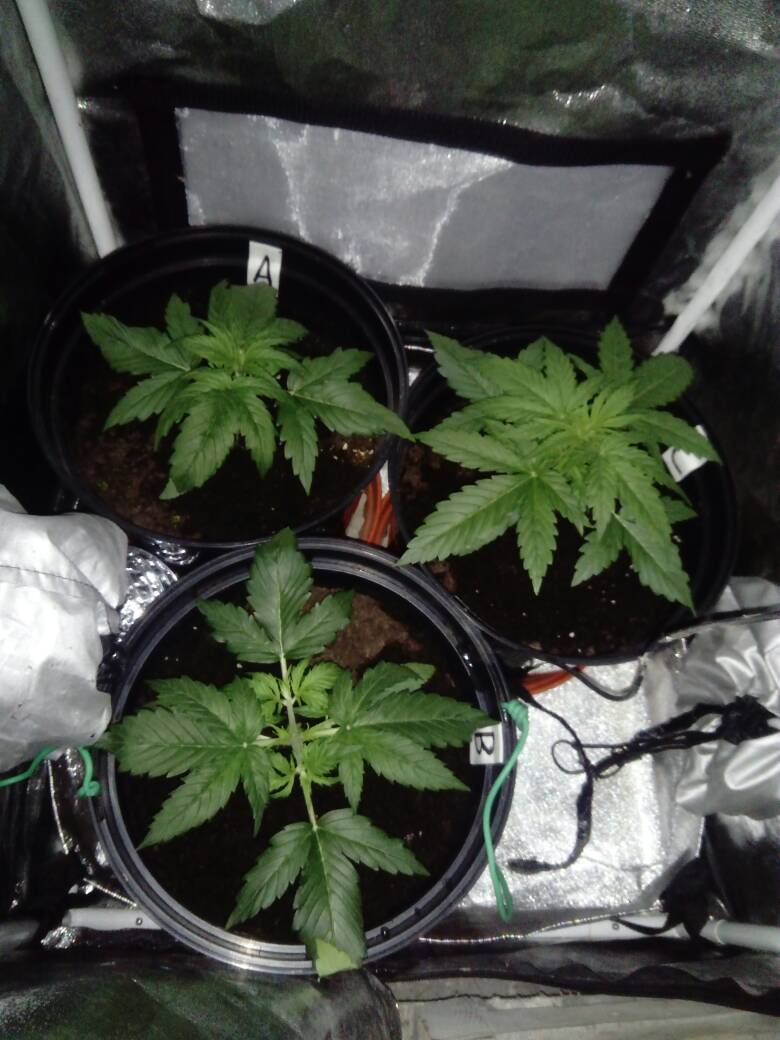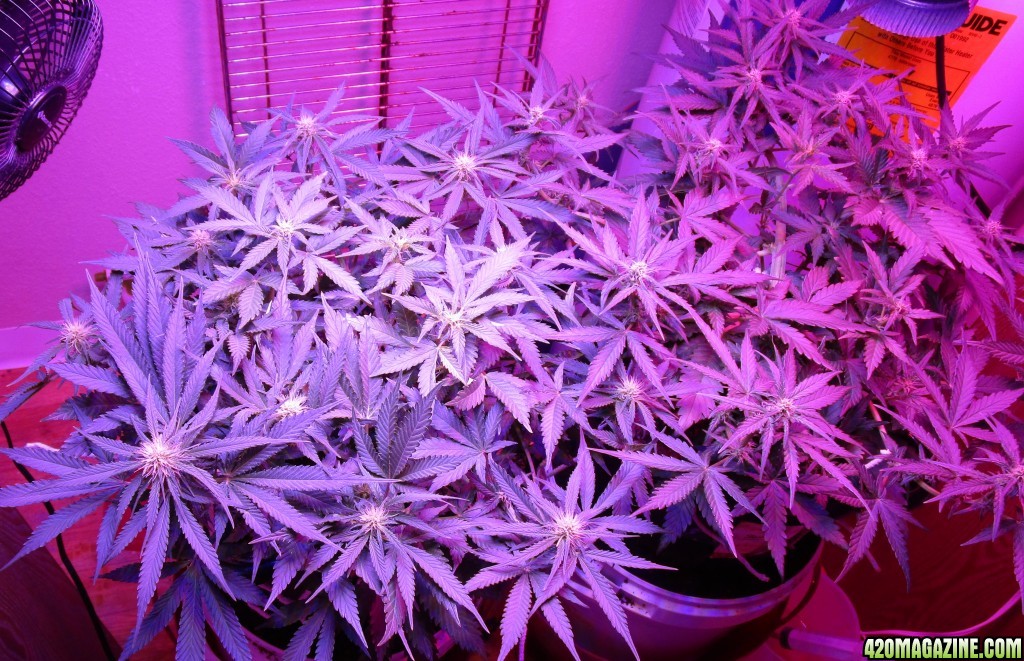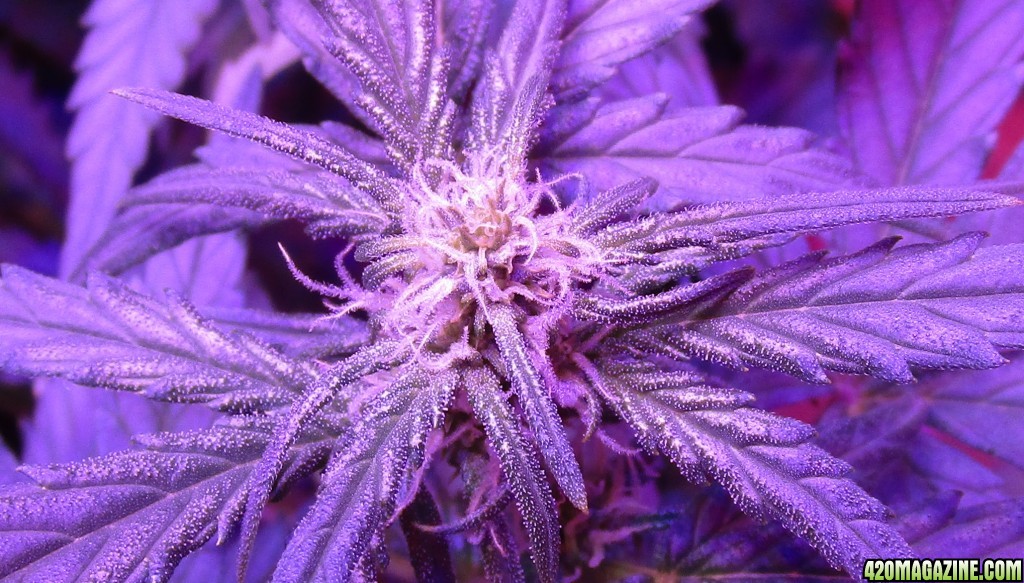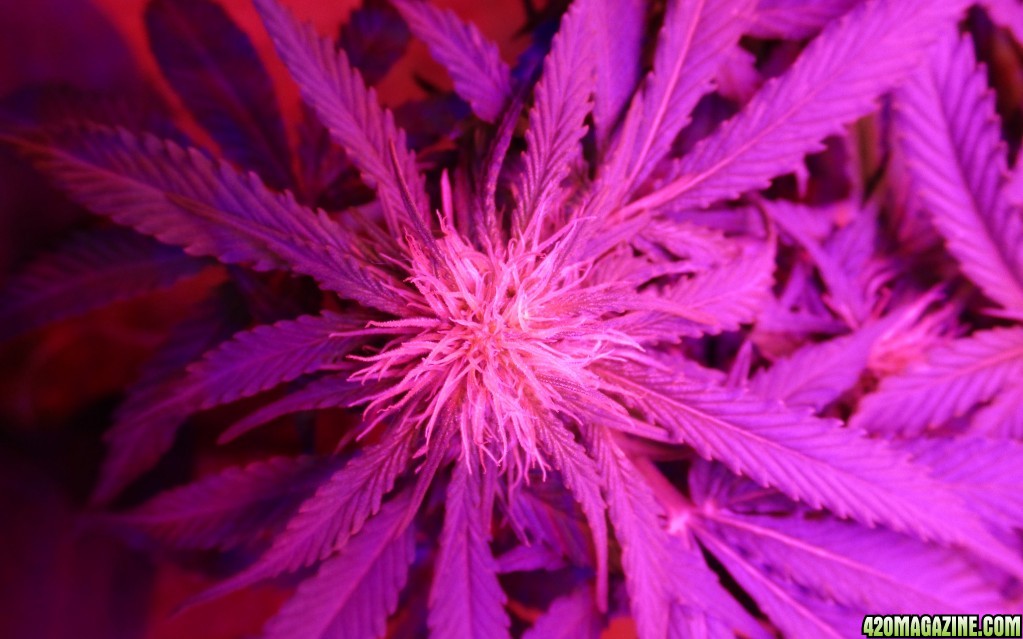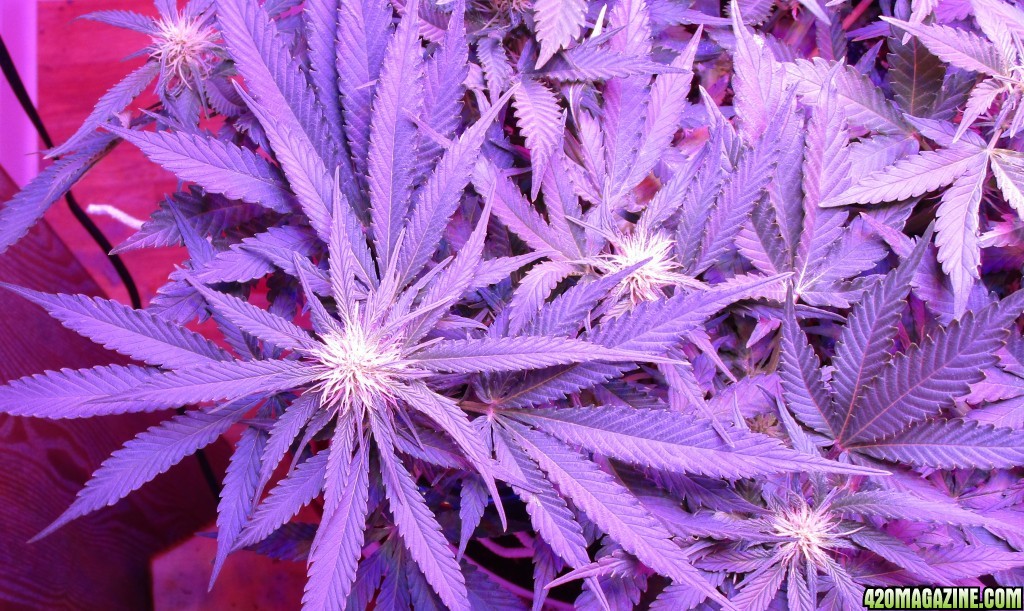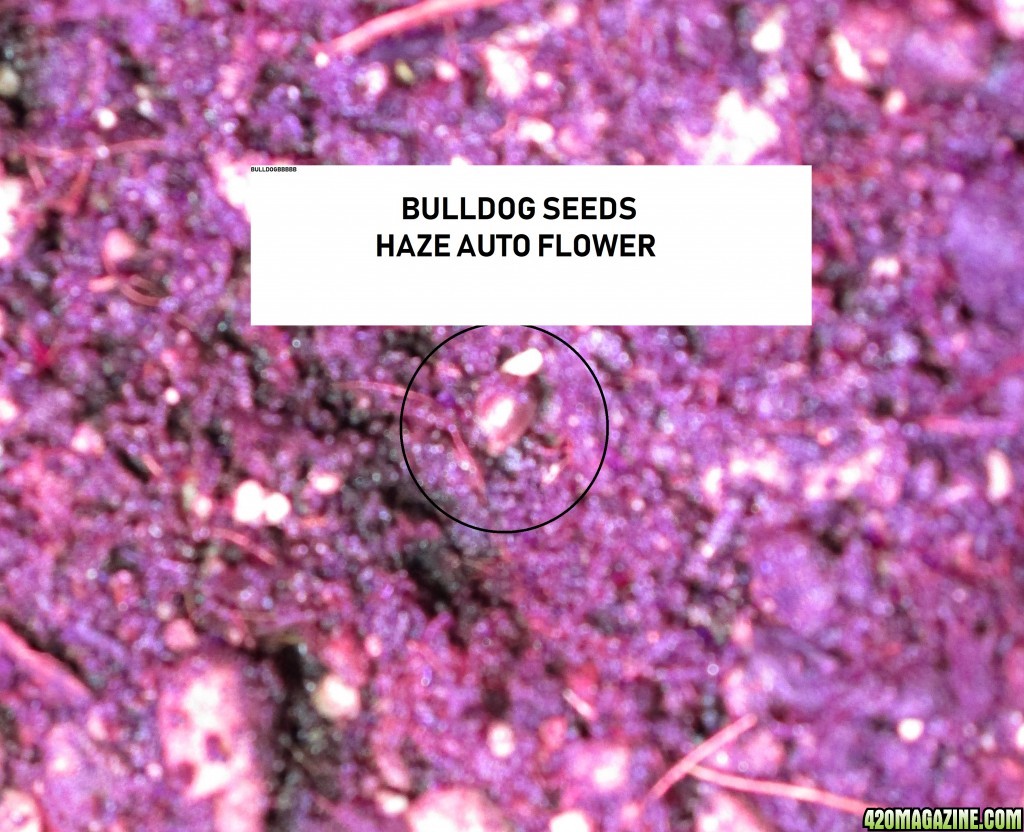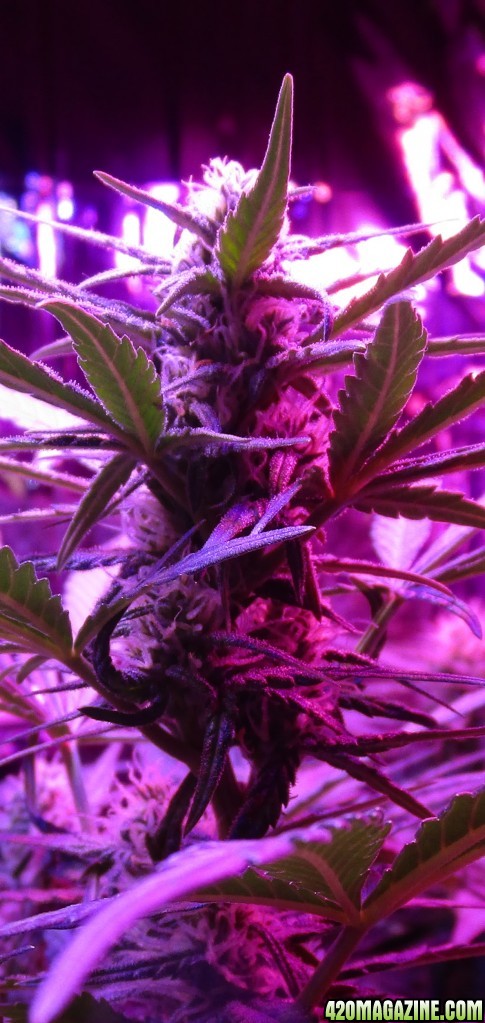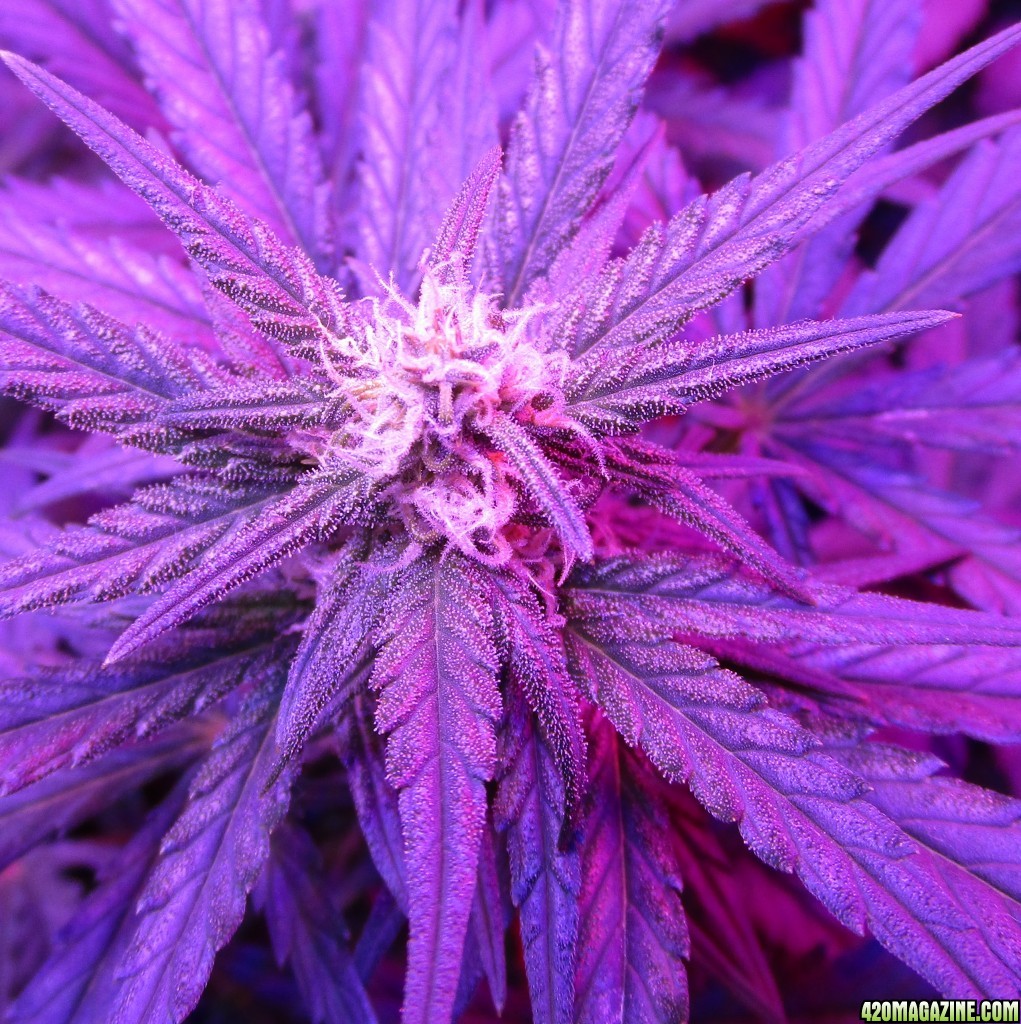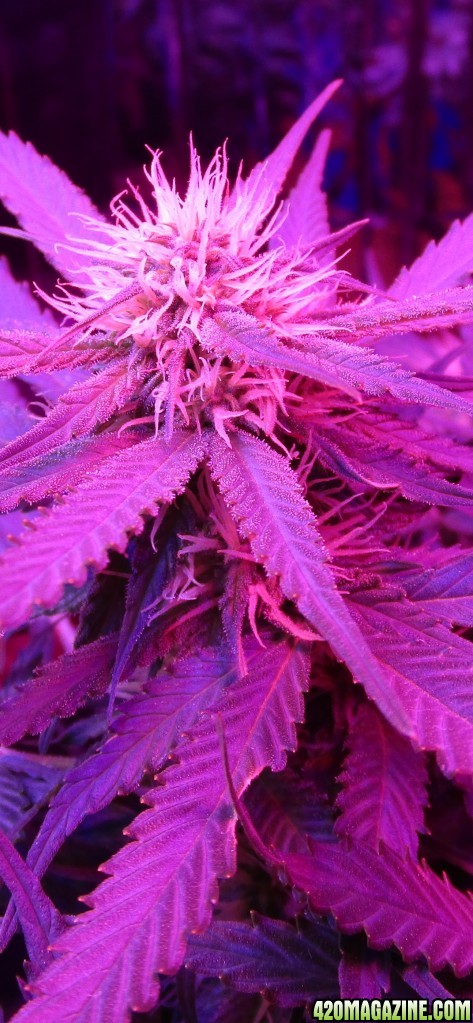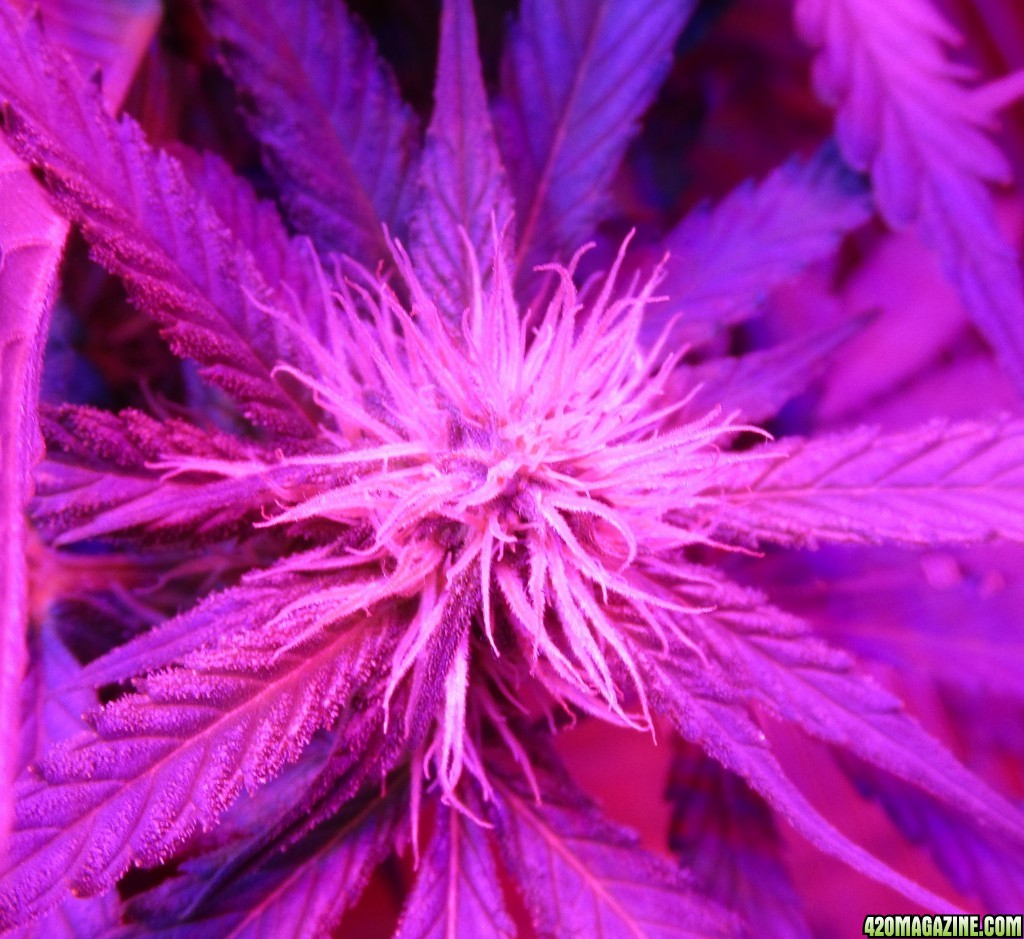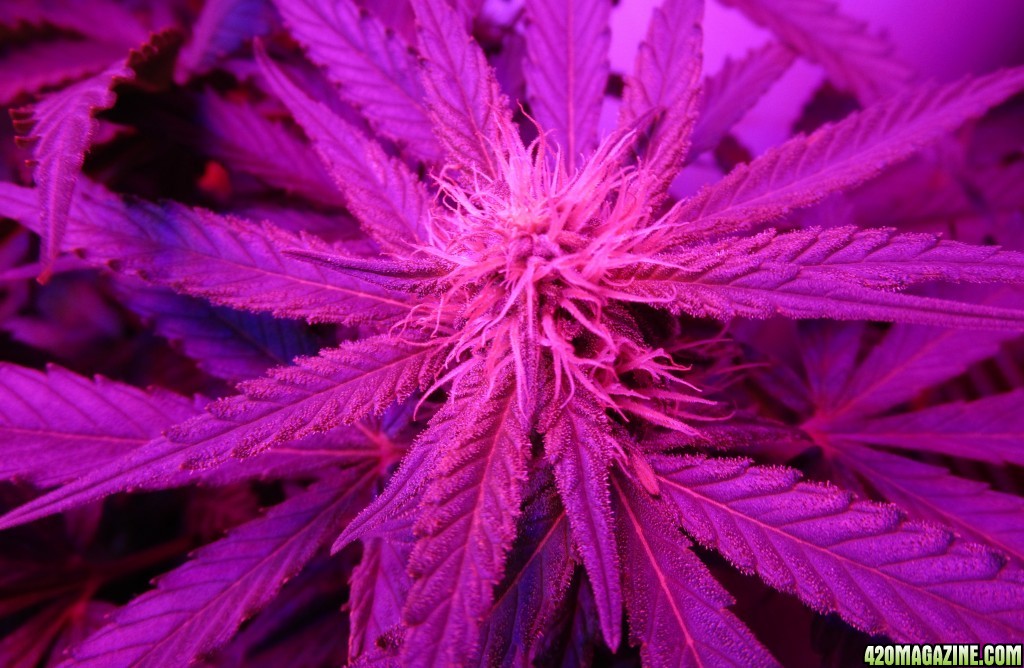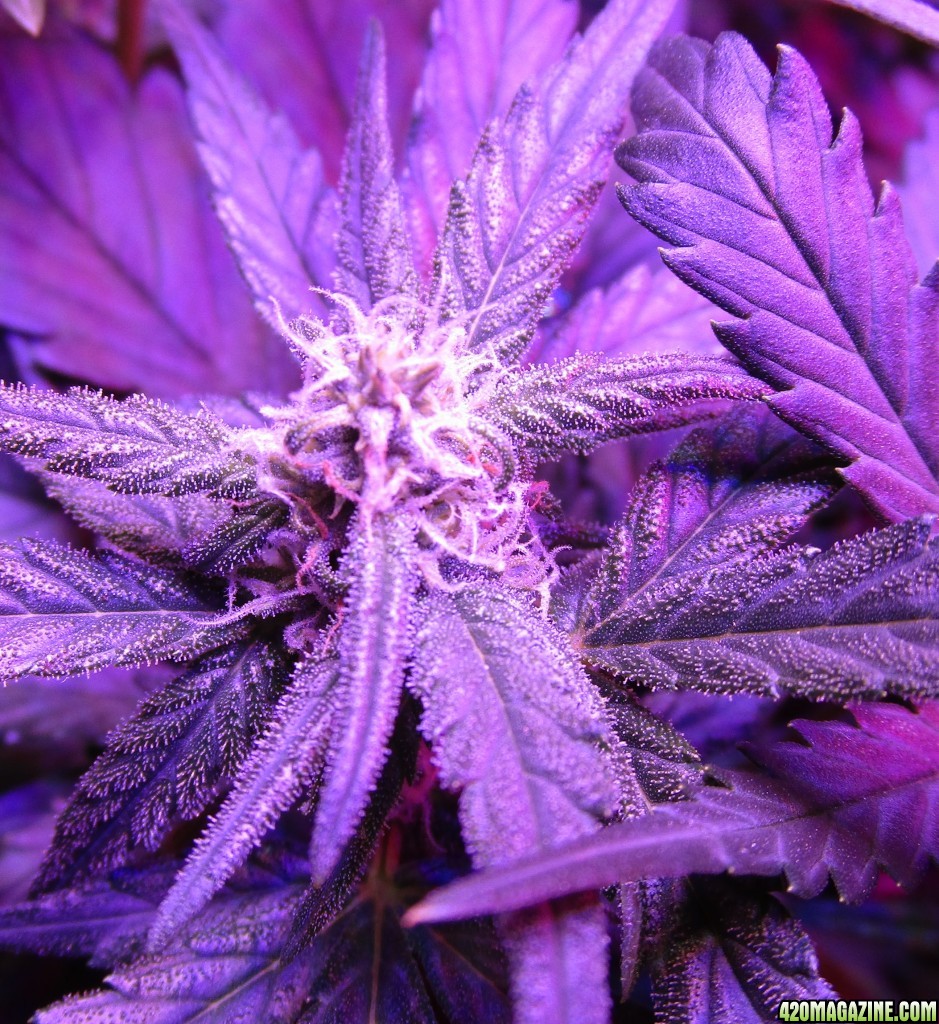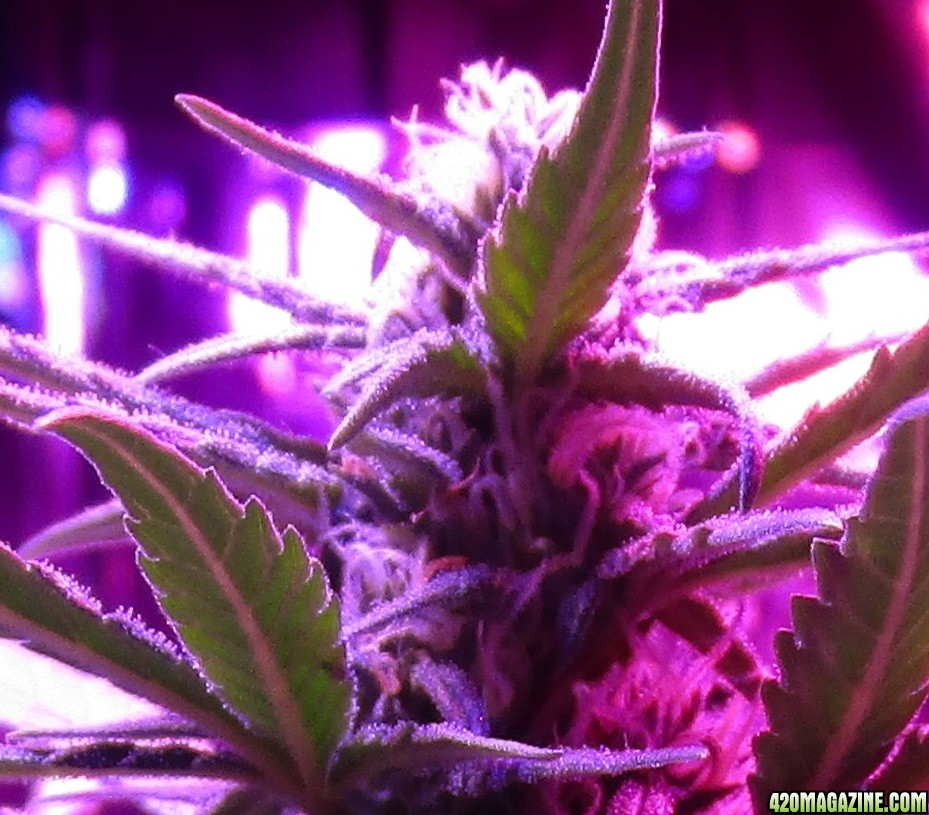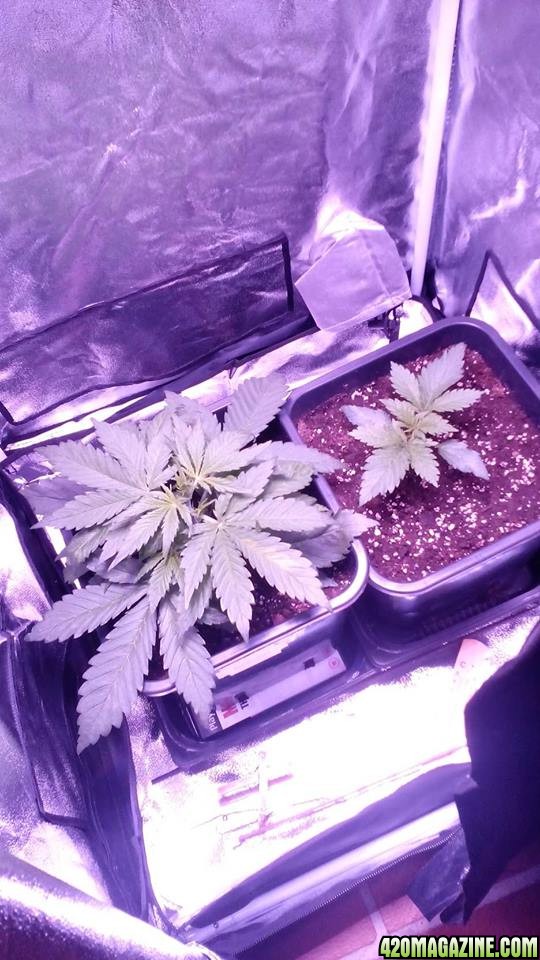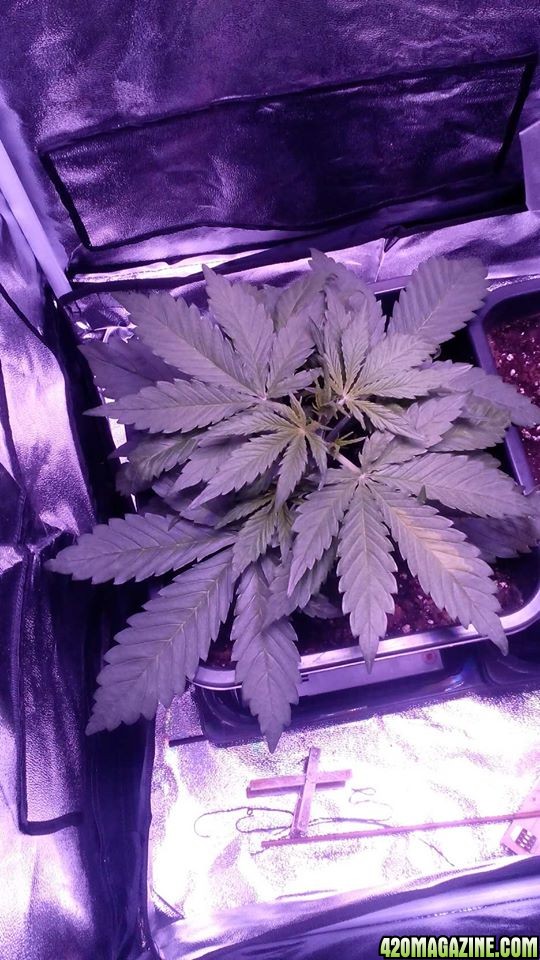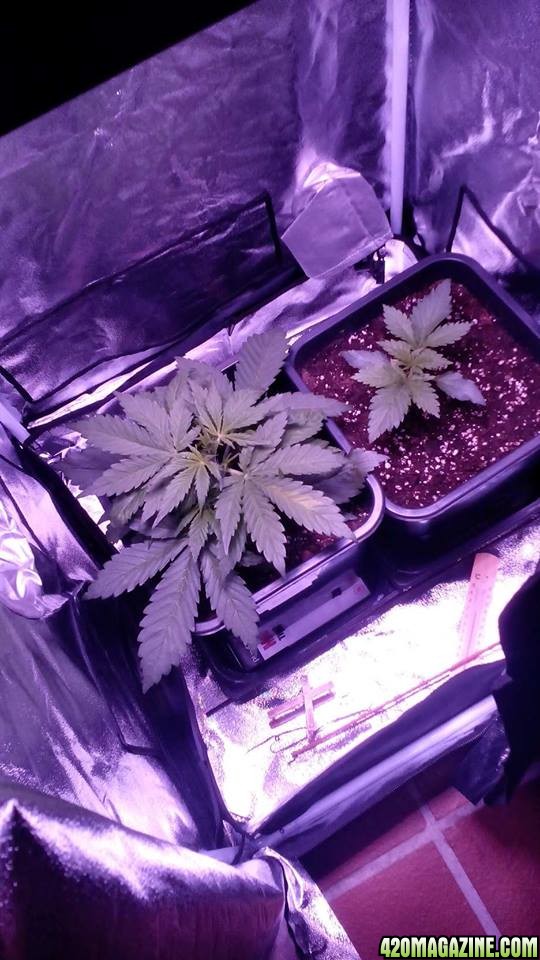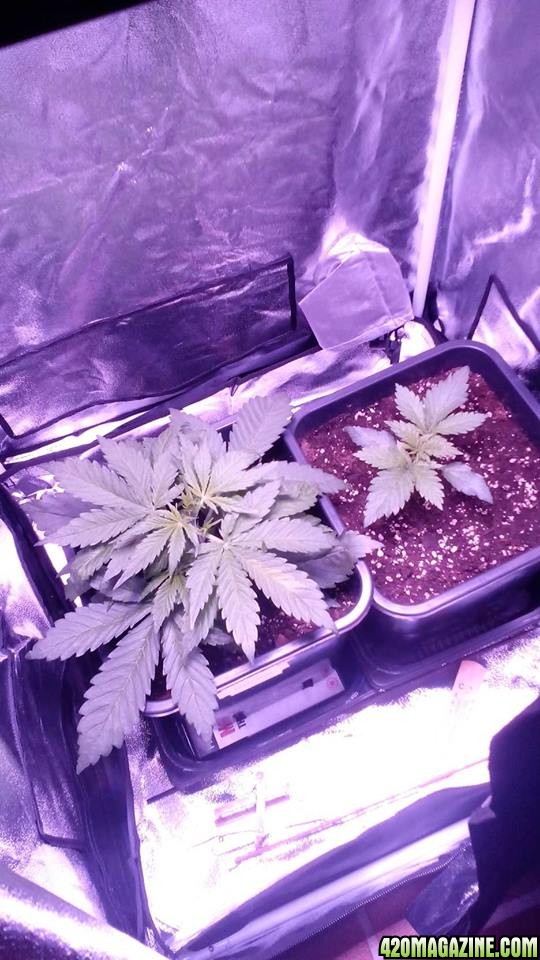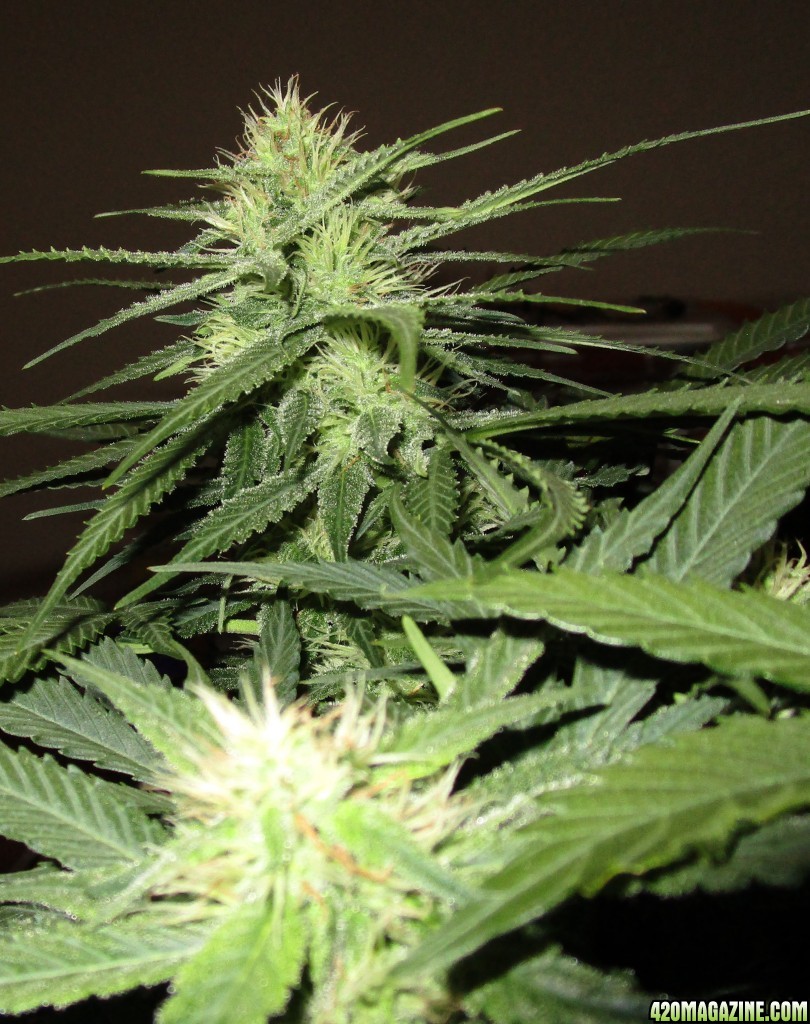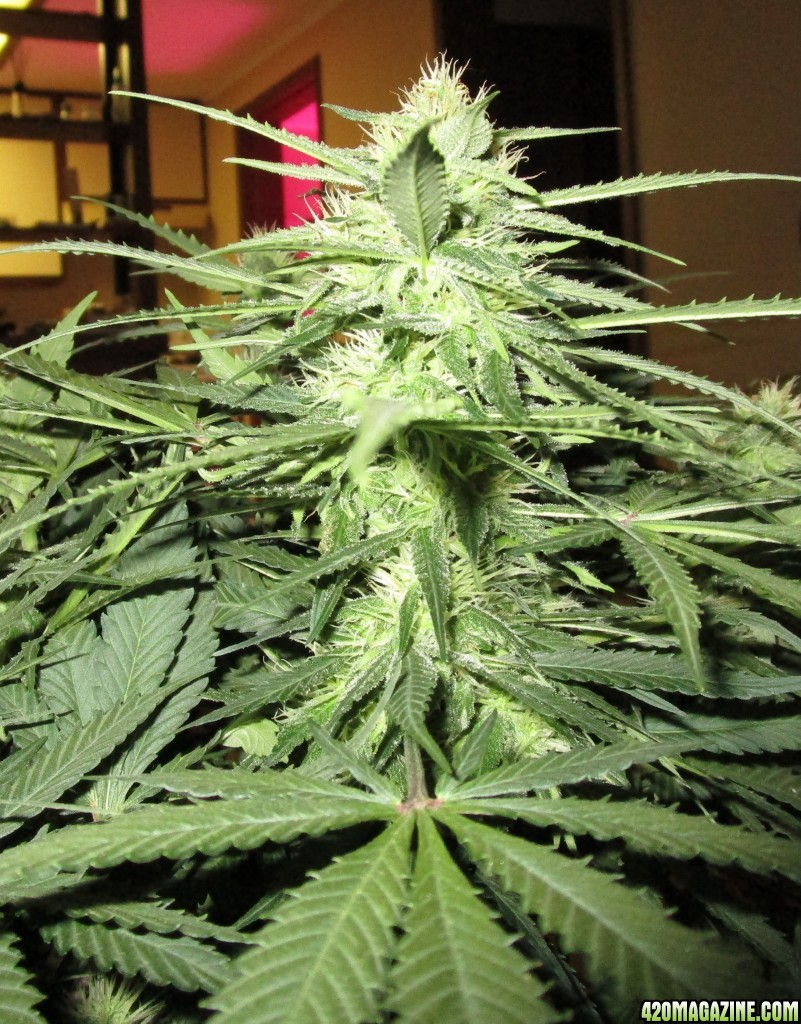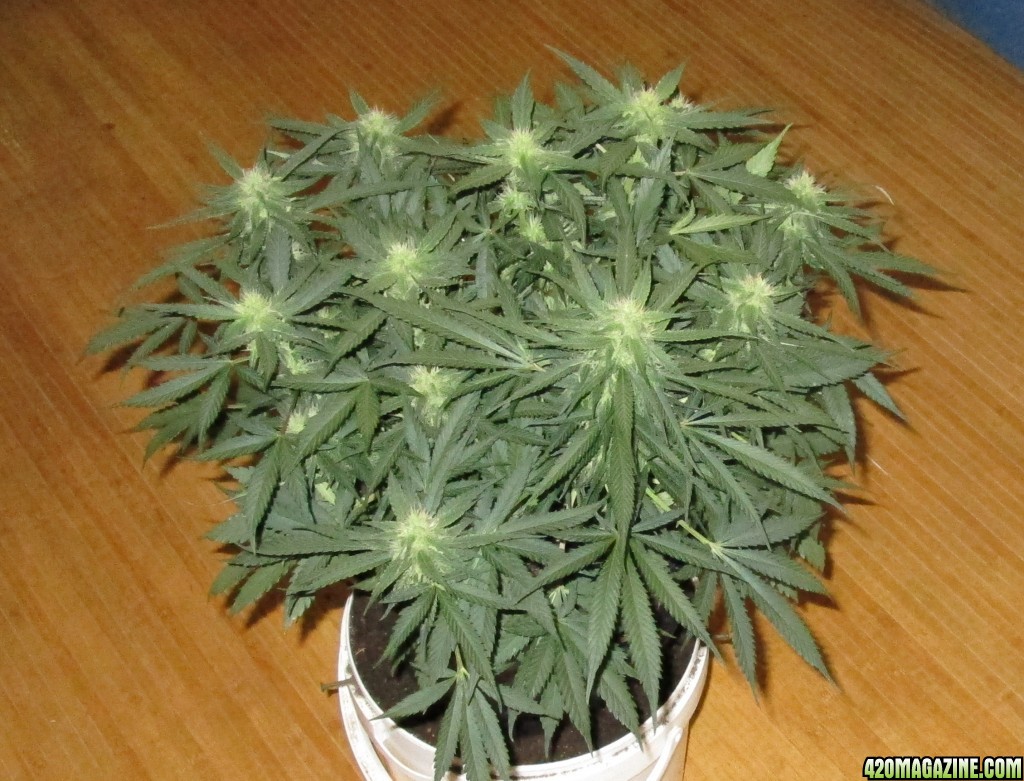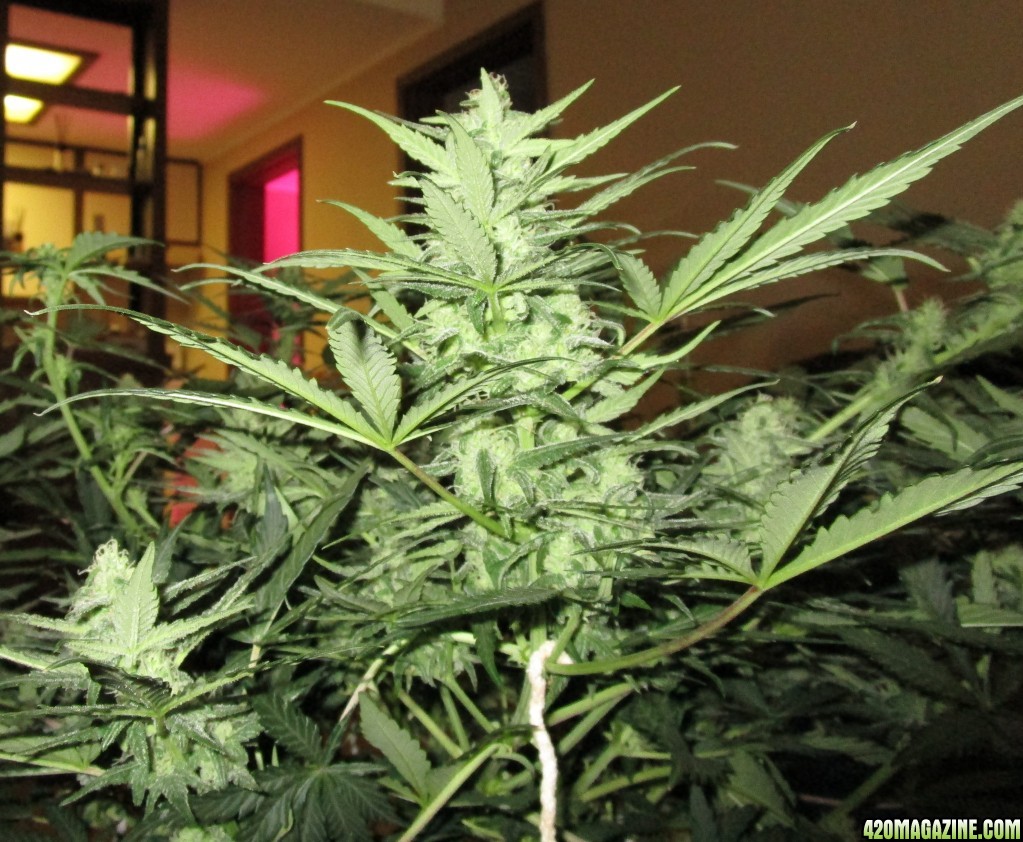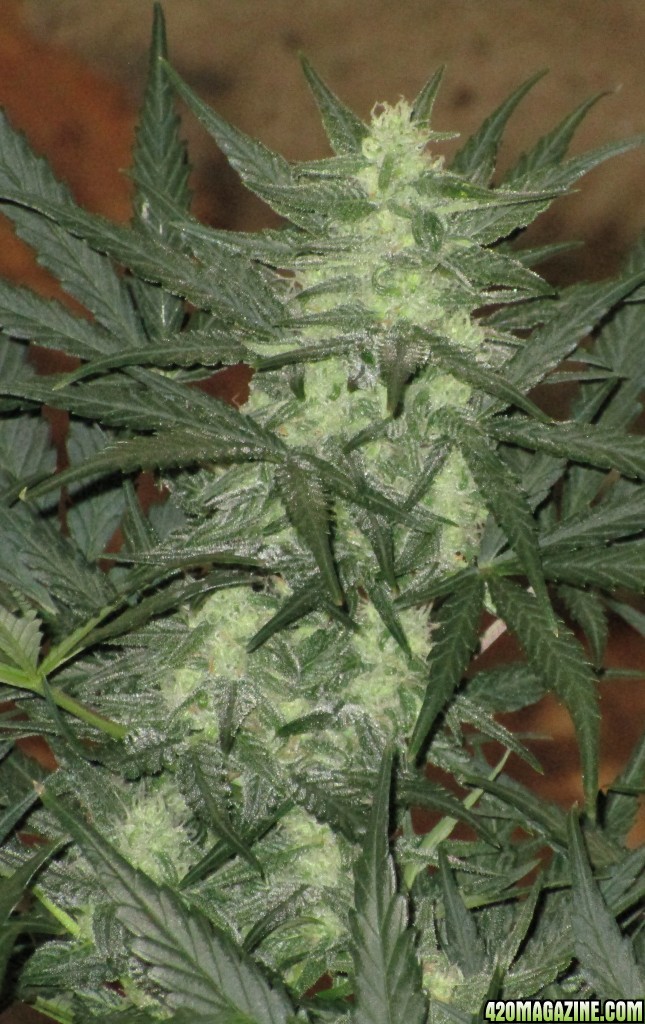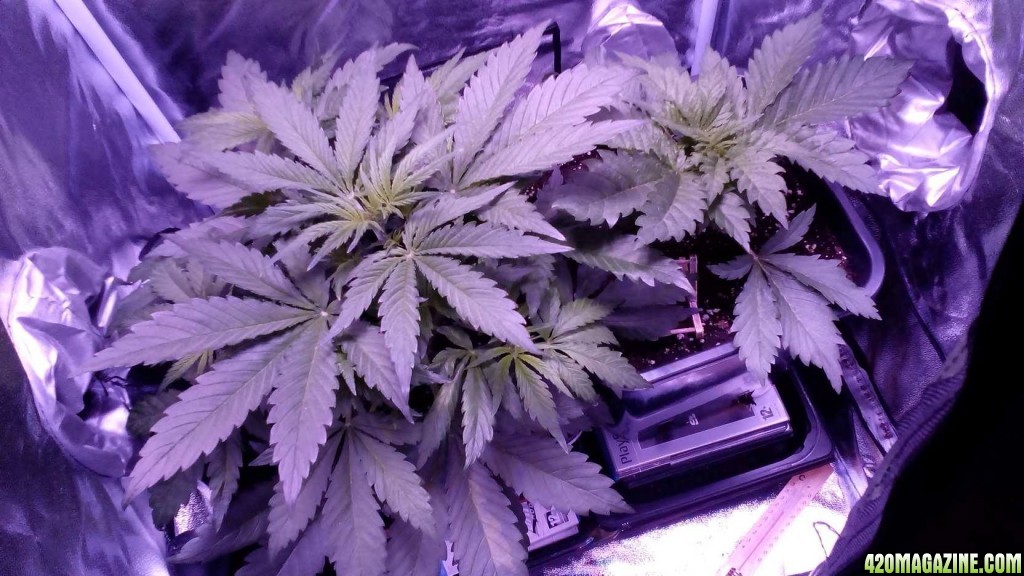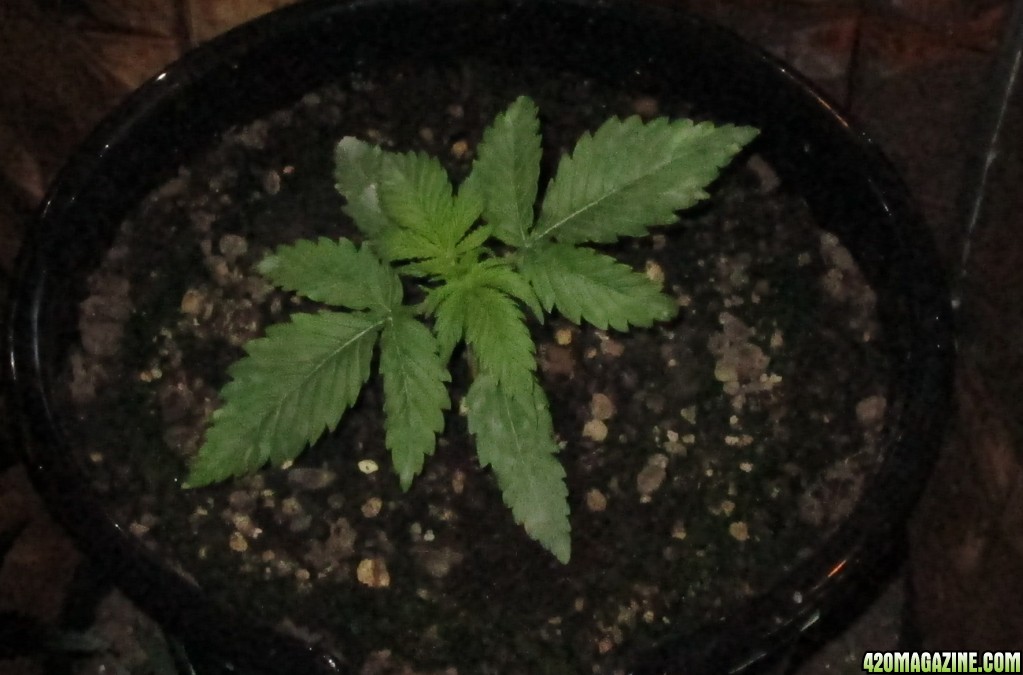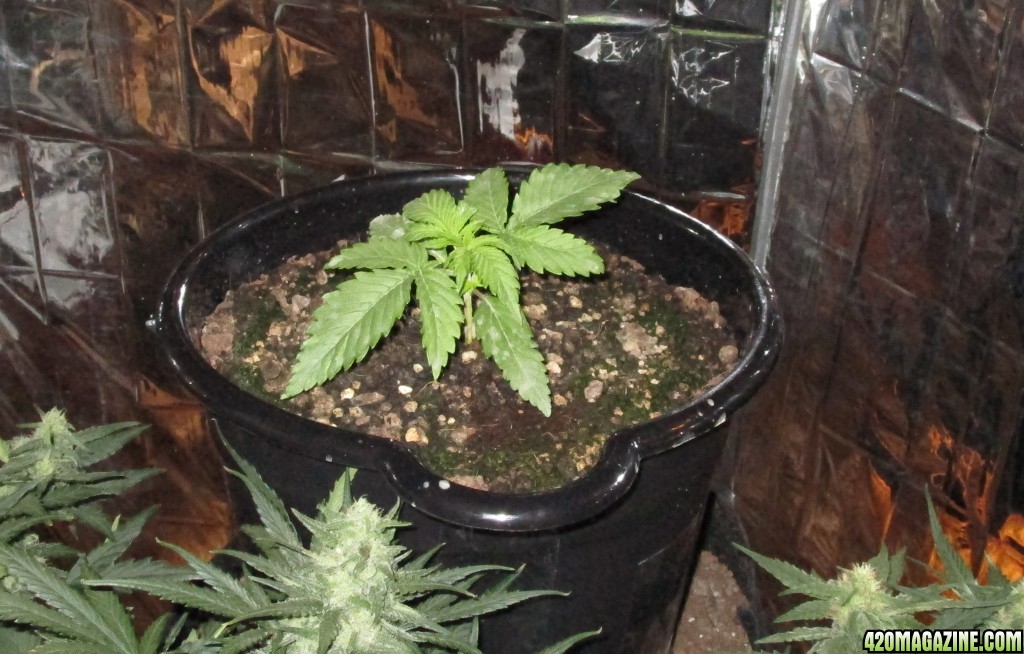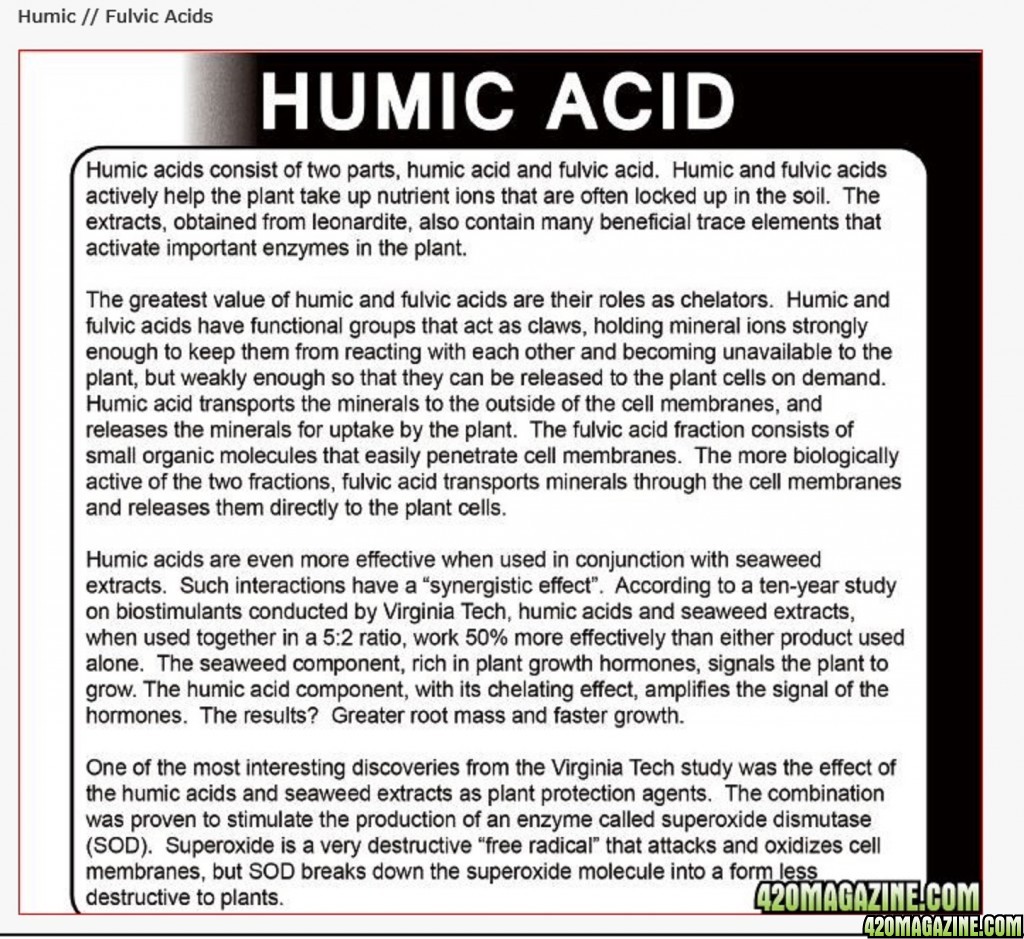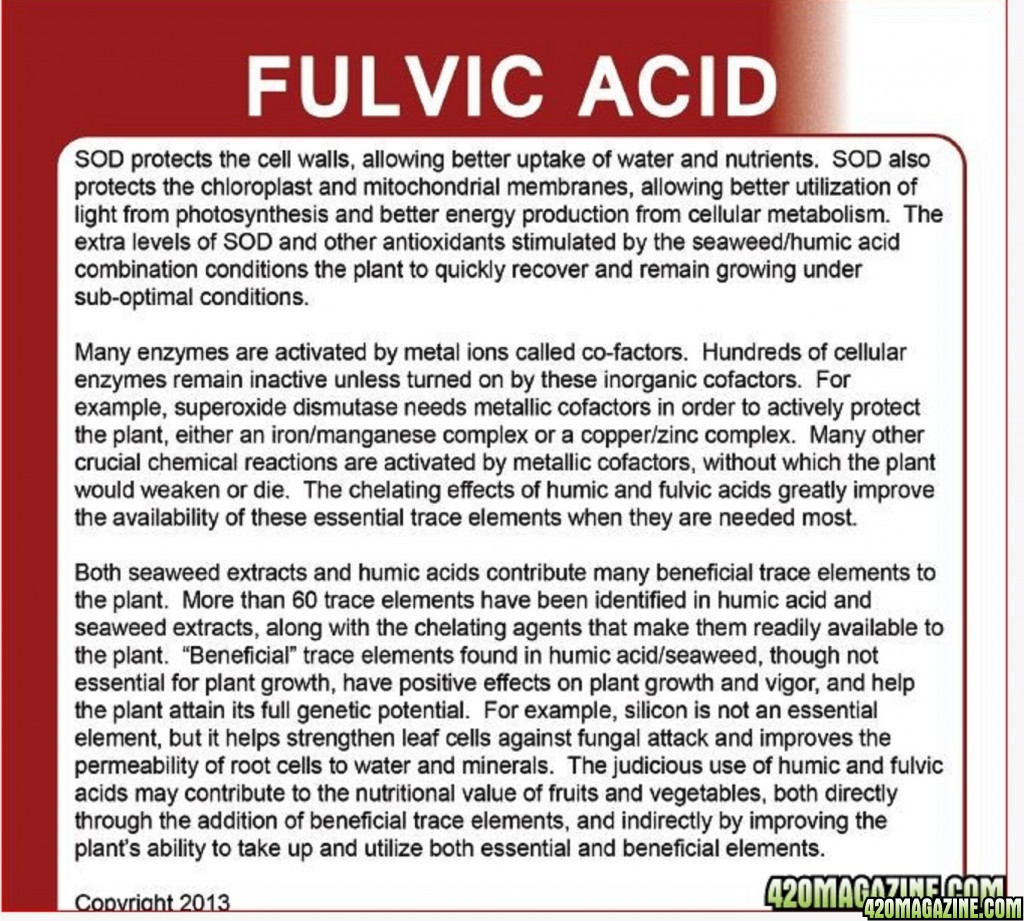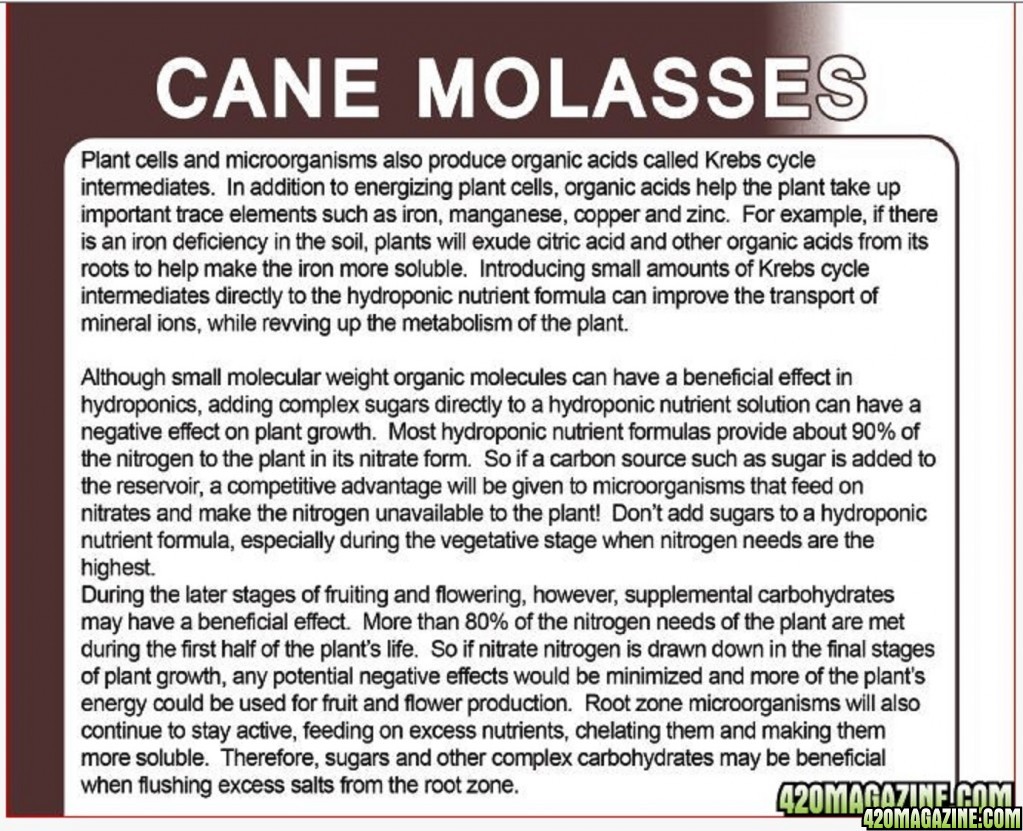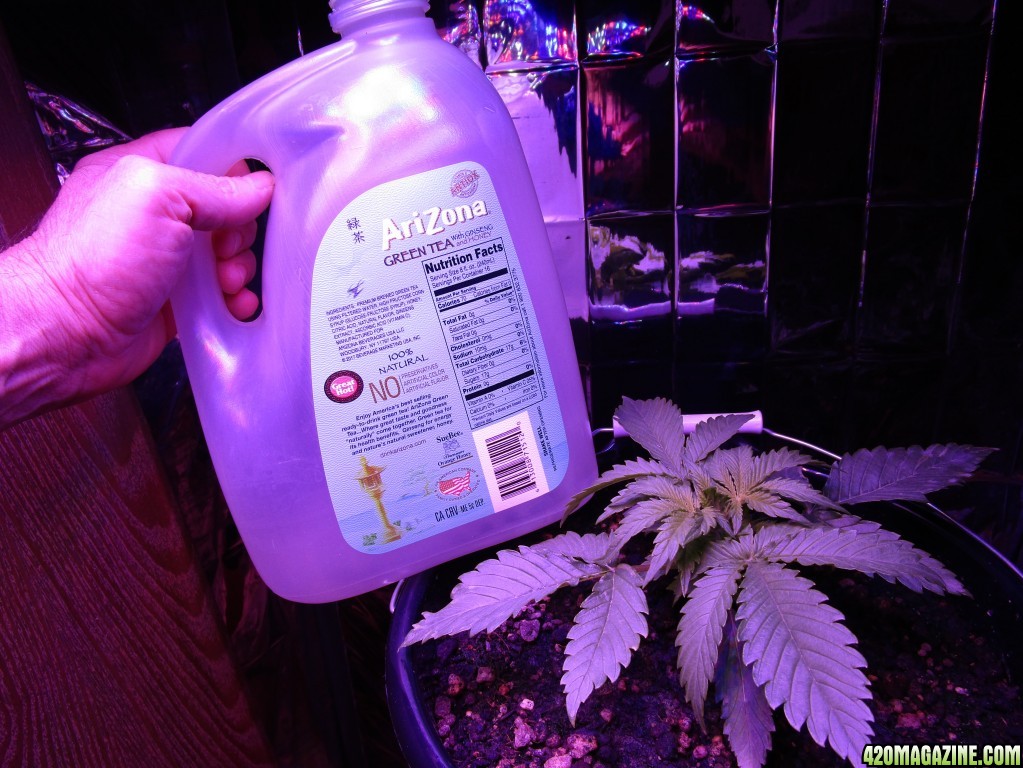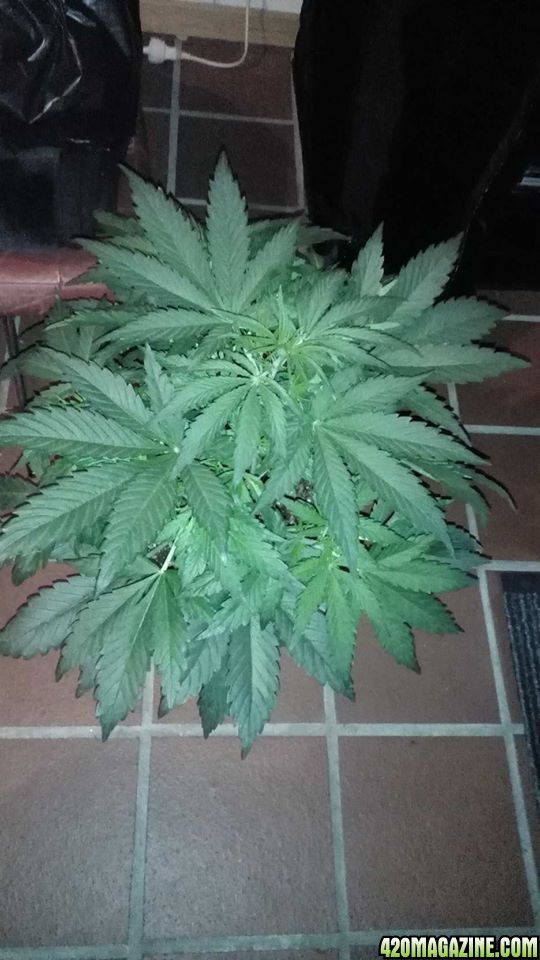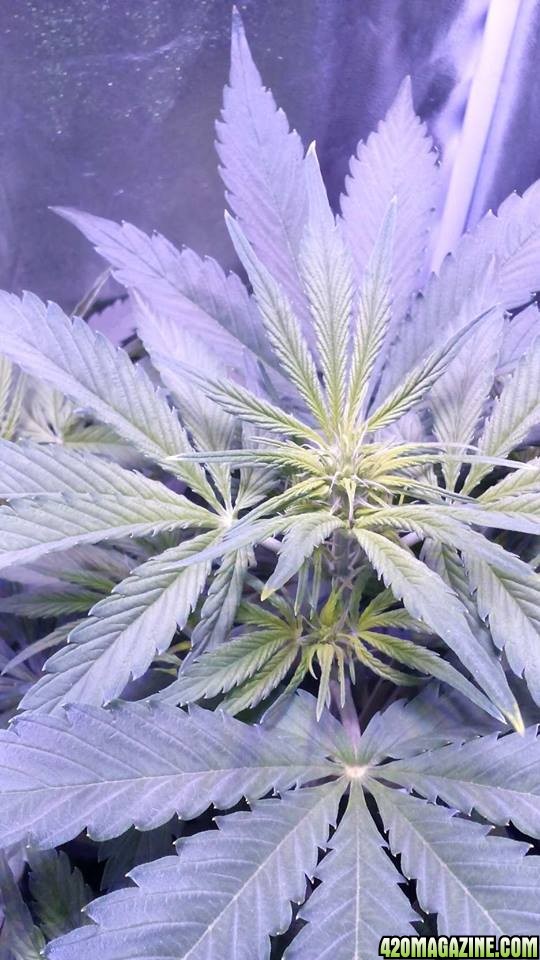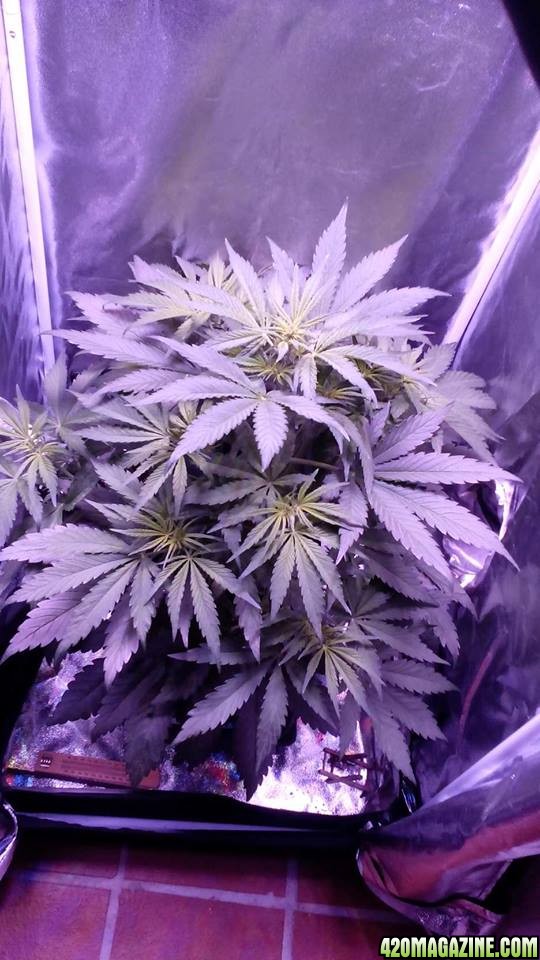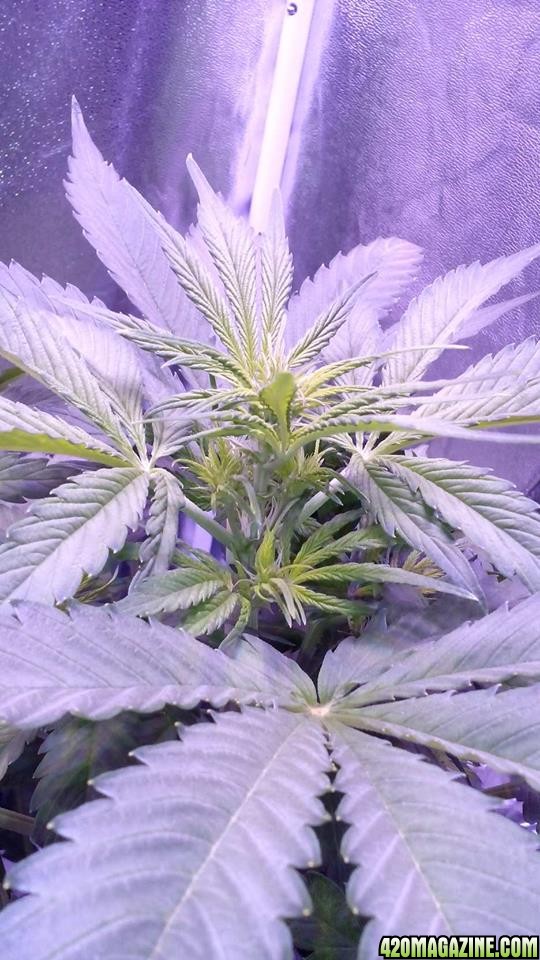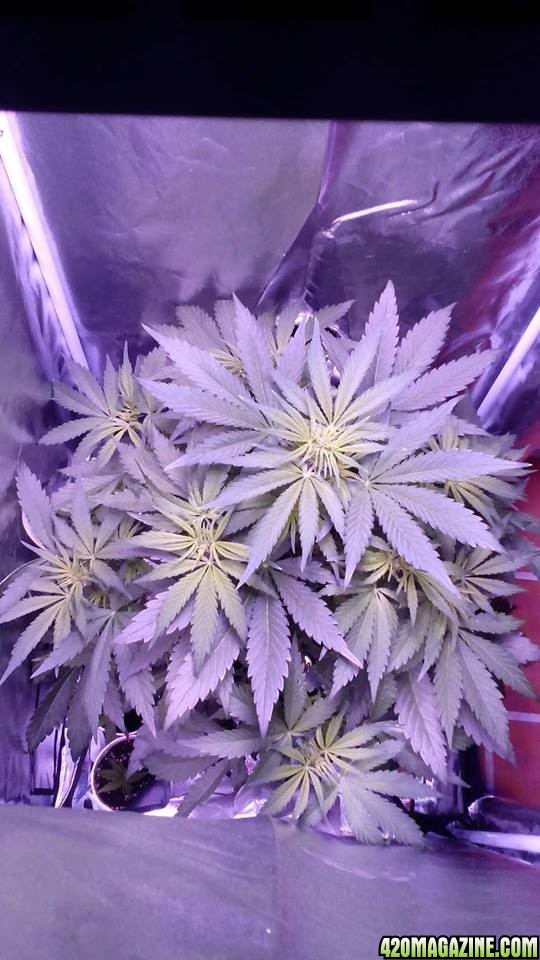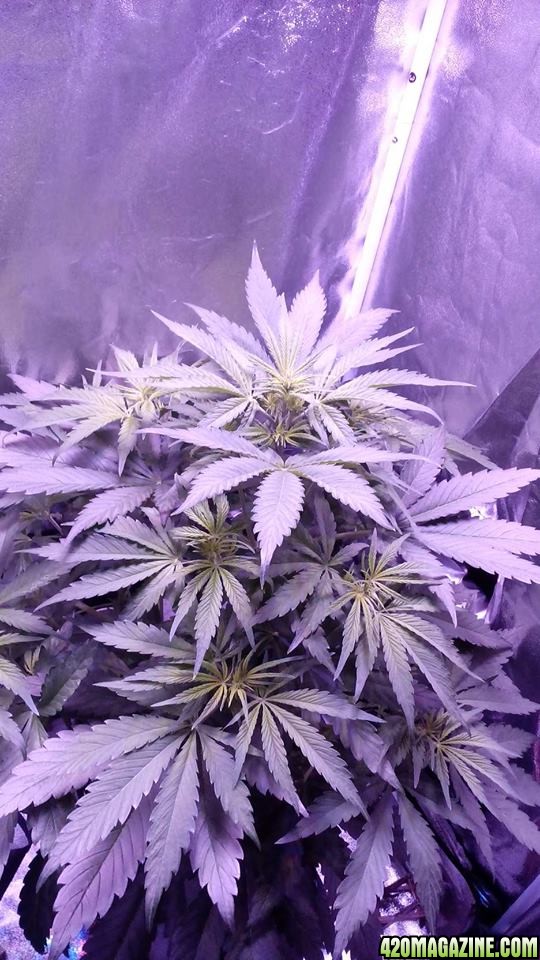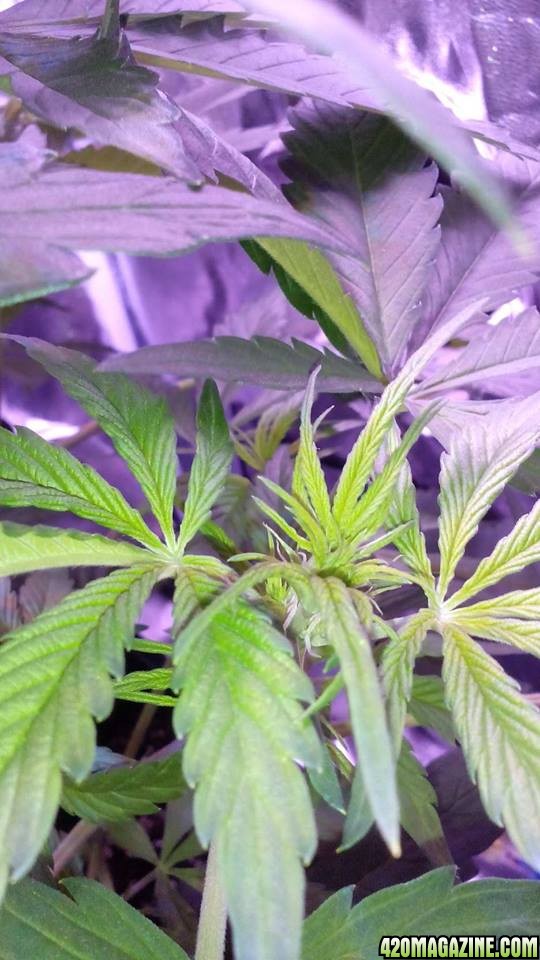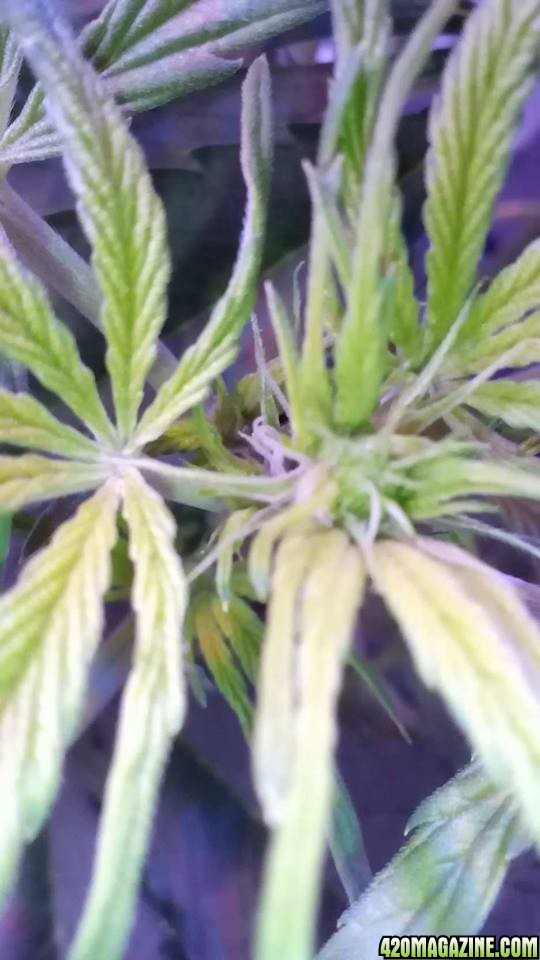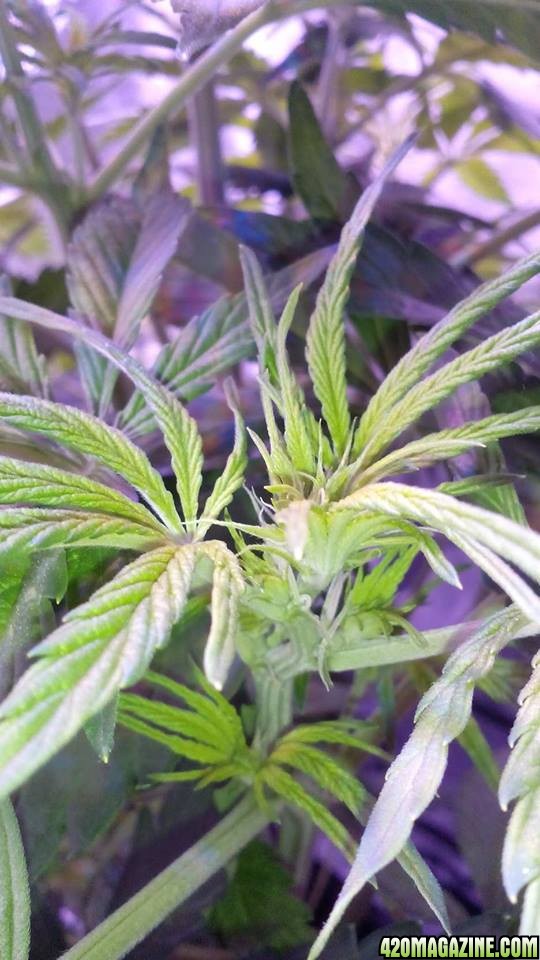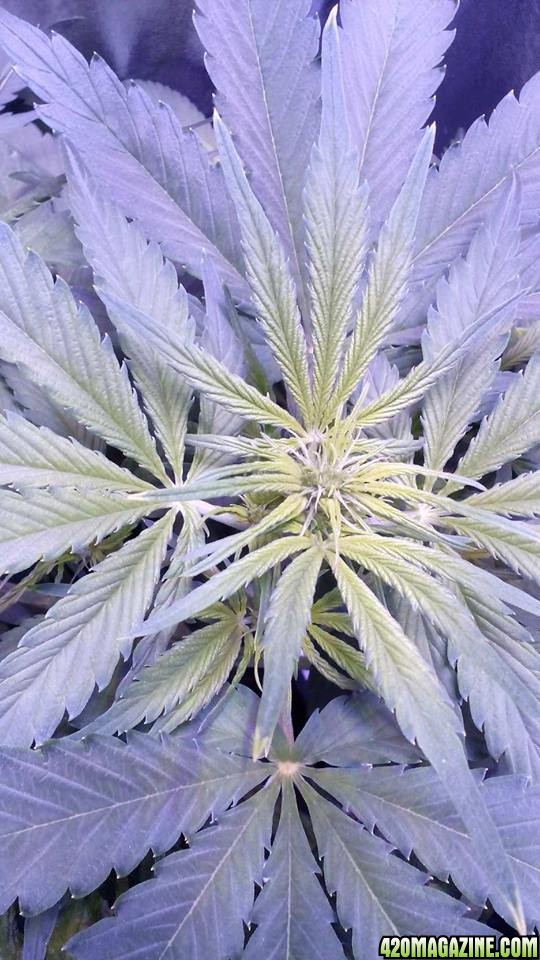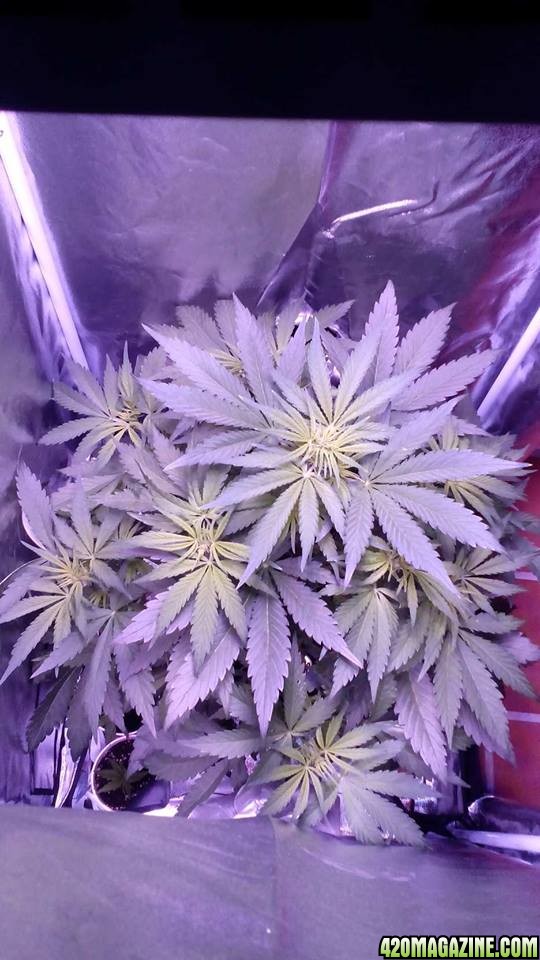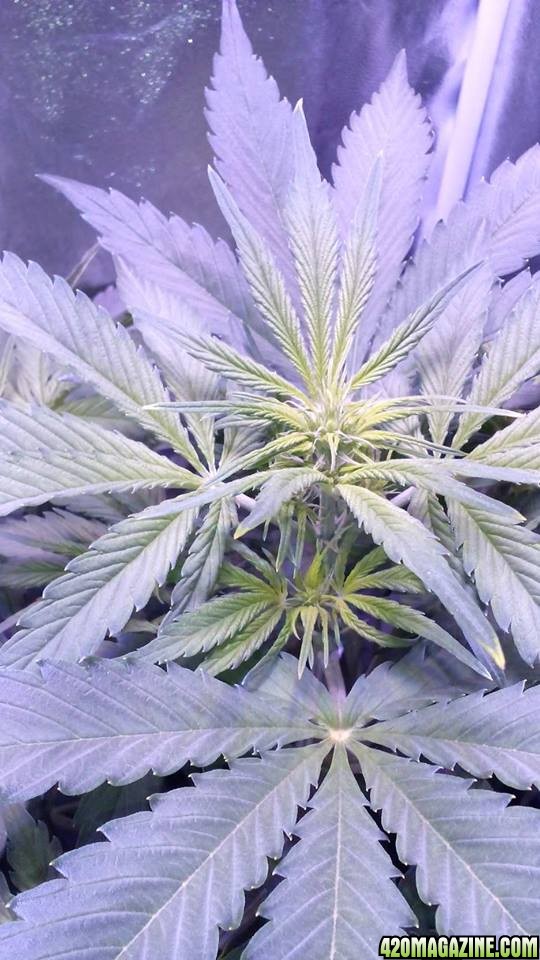You have no need to be jealous.... envious maybe but not jealous. You did say this was your first grow??? It appears to me you have two very green and perky plants. No burned leaf tips or discolored and wilted leaves.
You have not posted any HELP ME posts in crisis mode...... so guest what you have to do next??? Try again!!! It is a really cool way to get to take pictures that make others want to try harder.
If this helps I started this plant 10 days ago, it is a sativa Haze Autoflower:
I have it in a BIG pot to start, I start giving it nuit`s from day one and I have a fan blow on it. Enough to where it is constantly shaking / wiggling.
The nuit`s are very weak: 1 gallon water, you can use tap water. Fill one gallon jug and with the cap off, just leave it in the sunshine for one day. Here in the US they have chlorine added and UV light from the sun brakes it down. They add calcium, lime but I feel with soil or any medium it is OK and the R/O water is good for flushing your plants. **JUST MY OPINION **
To it I add 2 Tablespoons mycorrhizae fungi powder:
this helps build and maintain the root system. REMEMBER what you don`t see is far more important then what you can..!! If you leaves are wrinkled, wimpy, discolored or any thing else the plant is showing as a red flag. This is were it started, the roots from day one till the end have so much to do with you buds. AND YOU NEVER really know they are there. Seriously ask your self " do I think about them or the plant and the leaves when you first look at them" ....just say 'in...
I add 1/2 teaspoon of Cal/Mag Plus: it is a solution that feeds calcium and magnesium to the plant. DO YOU KNOW WHY?? and introduces a small percent of Nitrogen that is 1 of the main nuit`s the plant requires to grow.
a Tablespoon of molasses is added for the soils needs over the plants. The sugars feed the Bactria and Microbes braking things down to smaller pieces (chewing it up) for the roots to grab. It also adds sulfur, iron, potassium and other minerals. In small amounts that the young plant can handle.
I also add a few other things but theses are the first 2 and what and how you add things is tricky at first.
The first 20 days I pay more attention to the roots and since I cant see them. Learned to use the plants stem and leaves as guides. The fan causes the roots to dive down and out, WHY?? The plant is in survival mode using more energy to keep it from tipping over. It also make the main stem fatter, more like a tree trunk. It will stretch upward still but stay a bit lower then if you did not. I would rather a short sturdy plant then one tall but cant hold itself up. So stronger roots and fatter stem means a bigger and healthier "pipe line" down the road.
This is something I found on my own a few years back: Articles for Calcium / Mag..... plus the other things I add to CONDITION THE SOIL ~~ to help the ROOT SYSTEM ~~ that help the plant ~ make buds .... you seeing a hierarchy developing here.
Pay attention to the beginning as most (new growers) are looking for big buds as soon as they put the seed in the ground.
Also PH of the water you use is VERY IMPORTANT as I aim for 6.3 to 6.25 regardless of what I have or am not adding to the water. They sell PH UP and PH Down for you to add to the water to adjust.
ONLY ME but I use plain store bought white vinegar to lower it .... as the plants create citric and acetic naturally, and store bought baking soda to raise it. They are MORE natural and easier on the root system.
** JUST MY OPINION** and they are safe enough to keep next to the salt and pepper!!
Also if possible I have the lights on for 20 hours the first 14 day, then it is 18 on-6 off till the last 2 weeks. Then I go 12/12 and just water...NO NUIT`S of any kind. A little trick is to make sure your PH is UP passed 7.75.. I shoot for 8.5. If you read about the zone, the ideal PH area for the medium you are using. Soil is 6.75 Highest and 6.05 Lowest some will argue but I don't care. I use 6.4 to 6.20 and don`t worry.
This is where the roots are the permeable, absorptive to all the goodies in the solution. LOCK-OUT ...just as it sounds is when the PH is out of these zones. Doesn't matter up or down it causes chaos and is a complete conversion of it own on how it fucks with your mind and the plant. Just remember you don't want to deal with it.
With that said by watering with only water for the last two weeks theory is the plant eliminates the nuit`s, that are way more then they would ever get in the wild.
That they have sucked up already. But the medium is still saturated. You could put a garden hose to them and flood them for 6 hours to "WASH" out the soil in the pot. If you don`t have a bathtub to do it in or it is impractical. I water with the PH at 8.5 on purpose to create LOCK-OUT. This is were it can help you!! ( the only time!!) They still take the water they need and burn-up live off what they have in there cells.
But the extra alkaline of the high PH tightens / shrinks the roots pores so they cant suck in the salts and minerals that are still in the soil. I had friends in California and Colorado that grew in giant 30 and 50 gallon planter pots in greenhouses. It was impossible to pump that amount of water to flush 50 or 60 or these planters. So they just mixed baking soda in 5 gallon buckets to a PH of 8.5 and watered with that to create a lock-out for the last two to three weeks. The plants stay healthy and lessen the stress on them. Plus you get really clean smoke almost as if you did not use any fertilizer at all. BONUS...!!!
I will start two more seeds two week before I do harvest these two grown plants. I will be using the lower pot immediately for the two new ones. So I don't mind if there is some left-over goodies living in it. Yes washing out the nuit`s is good. But all the microbes and bacteria, remember from the beginning are pushed out also. Billions of them in colonies have to be re-established again. Plus though the next 15~20 watering's it will dilute the nuit`s to levels the new roots and plant are now ready for. You save a little cash and is just thoughtful and though out growing. Like you know what you are doing or something!!
**Note** when I said 20 days that is give and take. The seed banks say 58 to 65 days till harvest.... for them maybe. They have scientists growing the plants and 10,000.00 dollar grow rooms!!!
So 20 more days "for me" will be 65 days from the time they germinated. The color of the fluid in the crystals on the leaves. Lets you know how "ripe" the flower is. Slightly milky ~ cloudy is were most harvest. It get darker the longer you grow them and the "effects" change. For uppity and jittery to subdued or flat-out couch potato. Your color is your call .... I have let them go 15 to 20 days longer the last two grows. So 75 to 80 days is realistic and they are even fatter!!!
I maintain the LED`s at no closer then 15~16 inches and no further then 20~22 inches. This is what I do. what is right????, or what the manufacture suggest. I understand but this is what I decide to do and I live with it. I go 7 days at 16 then 4 days at 20..........
Why Are My Plant’s Leaves Turning Yellow?
With all of the emphasis on N-P-K in agriculture, calcium and magnesium are sometimes overlooked.
Calcium and magnesium are essential macro-elements, used in relatively large quantities. In fact,
plants take up more calcium than phosphorus! Calcium is sometimes combined with magnesium,
since calcium can act as a buffer for magnesium uptake, helping to prevent toxic levels of magnesium
from being taken up by the plant. A good balance of calcium to magnesium is about 5:1, or 5 parts
calcium to 1 part magnesium.
Calcium is an immobile element. In other words, once it is locked up in the plant tissue, it can’t be
trans-located to other parts of the plant. So a calcium deficiency normally shows up in the new growth
at the growing tips of the plant, causing deformed leaves and reduced root growth. Calcium is taken up
passively by the plant dissolved in water, so a source of water soluble calcium must be continuously
available throughout the entire life of the plant. Anything that interrupts the flow of water in the plant
could cause a calcium deficiency. For example, if relative humidity is too high, the plant won’t transpire
as much water so calcium may not make it to all of the cells of the plant. As a result, calcium deficiency
may show up as tip burn in lettuce or blossom end rot in tomatoes.
Calcium nitrate is one of the few sources of water soluble calcium fertilizer. It is 98% water soluble
and immediately available to the plant. Most hydroponic nutrient formulas have at least two parts:
Part A and Part B. The Part A has all of the calcium nitrate, and the Part B contains the phosphates and
sulfates. For example, if concentrated calcium nitrate is added to concentrated magnesium sulfate, the
calcium could react with the sulfate to create insoluble calcium sulfate. The result would be gypsum,
which is 98% water insoluble. The calcium would be locked up and unavailable to the plant, as well as
the sulfur. So when using both calcium nitrate and magnesium sulfate, make sure that they are combined
in complete diluted form!
Magnesium is a mobile element. In other words, if there is a magnesium deficiency the plants will take
magnesium out of the lower leaves and transport it to the new growth where it is needed the most. So
magnesium deficiency shows up first as interveinal chlorosis on the oldest bottom leaves. Magnesium is
the central element in chlorophyll, and it is actually the magnesium that makes plants green. So if there is
a magnesium deficiency, the veins stay green but the tissue between the veins turn yellow.
Magnesium sulfate is water soluble, and it is the main source of magnesium used in most hydroponic
fertilizers. It can be used at the roots or as a foliar spray, and plants will respond quickly if magnesium sulfate
is used to correct a nutrient deficiency. Magnesium sulfate is commonly available as Epsom salts, but some of
the common brands contain fragrances and other impurities. Whenever possible, use the pure, technical grade
magnesium sulfate in hydroponic applications.
A little extra magnesium can also be helpful during fruiting and flowering. Bloom and boost formulas are usually
higher in phosphorus to provide extra energy in the form of ATP, but magnesium orients the ATP molecules so
that the phosphate bonds can be cleaved. Magnesium also activates many enzymes that can perform thousands
of chemical reactions per second! Therefore, magnesium sulfate can intensify the effect of high-energy phosphates
in hydroponic vegetable production.
As always, moderation is always recommended when using additives. Start with very low dosages, see how the
plants respond, and add more if necessary. Since magnesium is easily taken up and transported, it could quickly
become toxic to the plant if too much is added. Excessive magnesium might also compete with other cautions such
s calcium and potassium and create a nutrient deficiency. Conversely, too much potassium could show up in the plant
as a magnesium deficiency. When mixed together in just the right proportions, however, potassium, calcium and
magnesium can help the plant reach its true genetic potential!
B-vitamins
There are several vitamins that act as plant bio-stimulants, but the most popular ones are B1, B2, B3 and B6 because of their positive effect on the metabolism of the plant. Many microorganisms produce B-vitamins as natural byproducts, but yeast extracts contain the highest concentrations. B-vitamins work at the cellular level, and they are commonly found as additives in cloning gels and cloning solutions, Rockwool conditioning solution, and most commercial plant bio-stimulant products.
Chemical reactions in plant cells are dependent on enzymes, large organic molecules that act as catalysts. Enzymes allow chemical reactions to take place many times faster and more efficiently than under normal conditions. Since the enzymes are not consumed in the chemical reaction itself, the same enzymes can be used over and over in the cell, sometimes performing thousands of chemical reactions per second!
Many enzymes, however, are inactive until turned on by a co-enzyme. B-vitamin derivatives form many of these important co-enzymes. For example, niacin is a component of the co-enzyme NAD, an extremely important cofactor in energy metabolism. Another important cofactor is FAD, derived from the B-vitamin riboflavin. Much of the energy from photosynthesis is ultimately transferred to NAD and FAD to activate and energize countless chemical reactions. Plants cannot take up large enzymes through the roots, but small co-enzymes such as B-vitamins are easily absorbed, and it only takes microscopic amounts to activate thousands of enzymes.
Under normal conditions, plants produce all of the vitamins that they need, but under stress conditions, plant cells at the growing tips tend to shut down to conserve energy. Therefore, under drought stress, heat stress and salt stress, growth rates are greatly impaired. Adding a few drops of B-vitamins directly to the nutrient solution helps the plant recover from stress much faster, stimulating the plant to keep growing instead of going semi-dormant.
One of the best applications for B-vitamins is to help plants recover from transplant shock. When a plant is transplanted, the microscopic root hairs are often damaged, making it difficult for the plant to take up enough water and minerals. Adding B-vitamins to the irrigation water gives the plants a needed boost, often reducing transplant shock from weeks to a matter of days. B-vitamins are also beneficial when transplanting from soil to hydroponics. Simply soak the plant roots in a bucket of luke-warm water with a few drops of B-vitamins added. Gently remove as much of the soil as possible, then transplant to a hydroponic system. Once the plant recovers, it will usually thrive.
Humic // Fulvic Acids:
This is not a do this list and you get great plants. What it is, is an example of what I did or fertilized my brain with in order to get nice buds. I also have been growing outdoor plants NOT just cannabis for 18 years, rose`s, hibiscus and veggies. This helps me understand... I have only been growing pot indoors 6 years and Auto flower for 3. It takes sometime to get good results and that means failures, yes I killed a few plants along the way.
So don't be jealous....... and this is just something to also think about while you sit and stare at them in wonder!! (I know you do!!!)
THE AMOUNT YOU GROW IS REFLECTED IN THE AMOUNT YOUR PLANTS GROW... very simple.
will stay in touch and just keep at it ....you are on your way...Peace.....

...


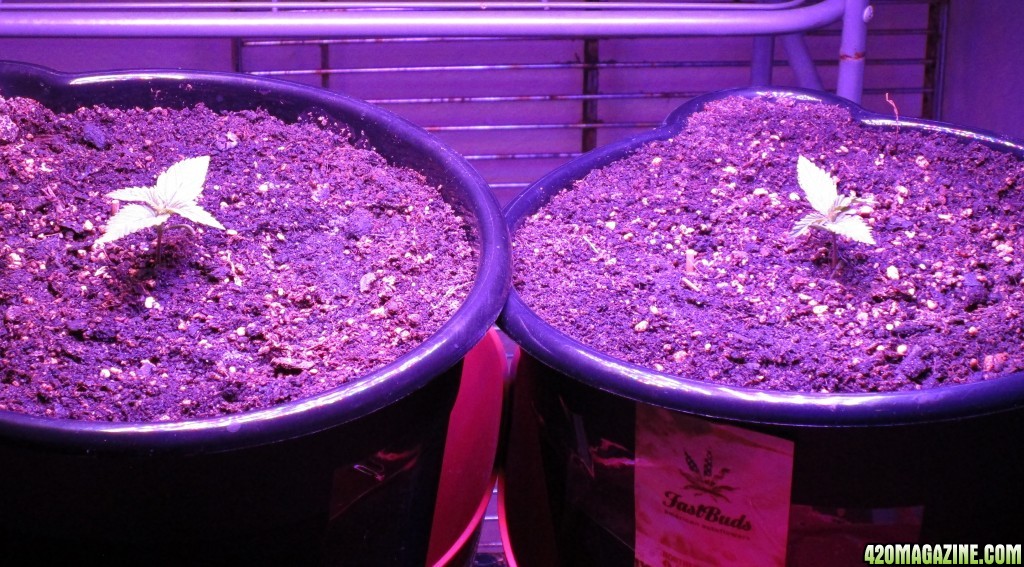
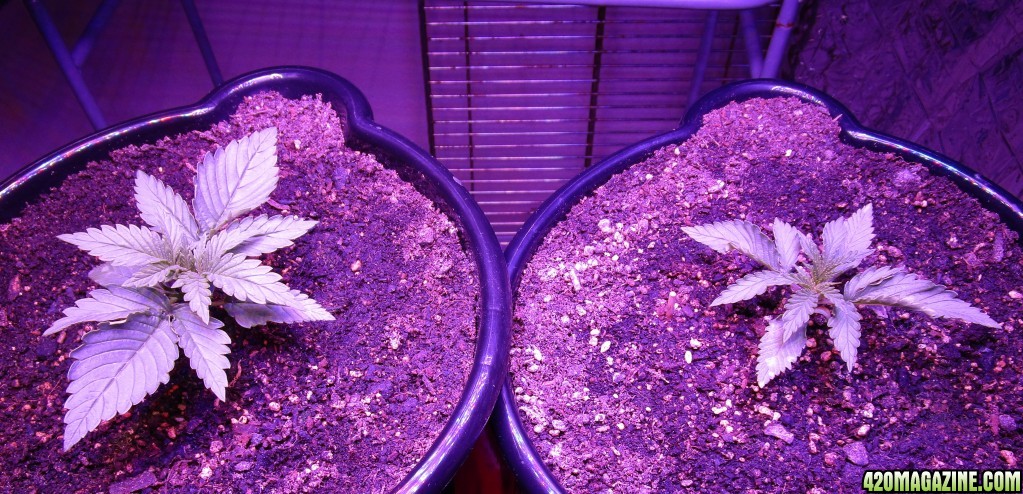
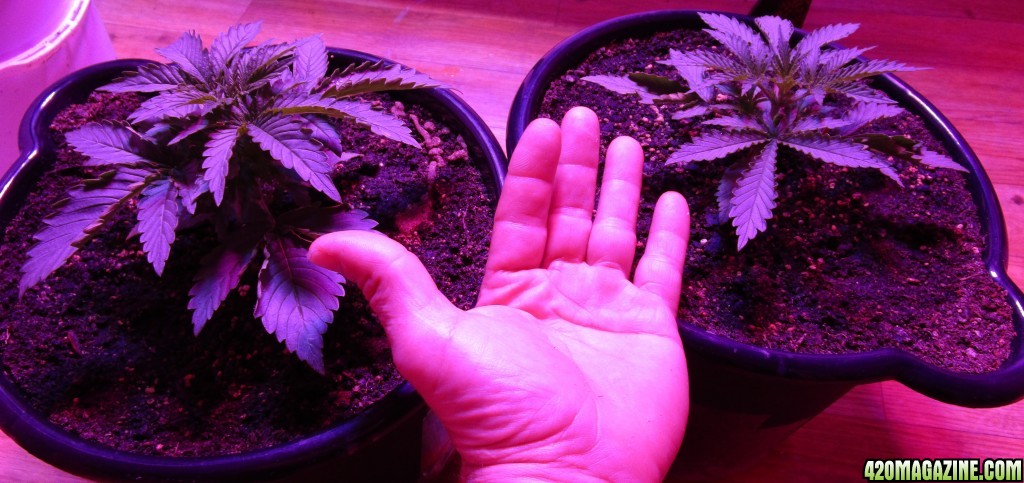
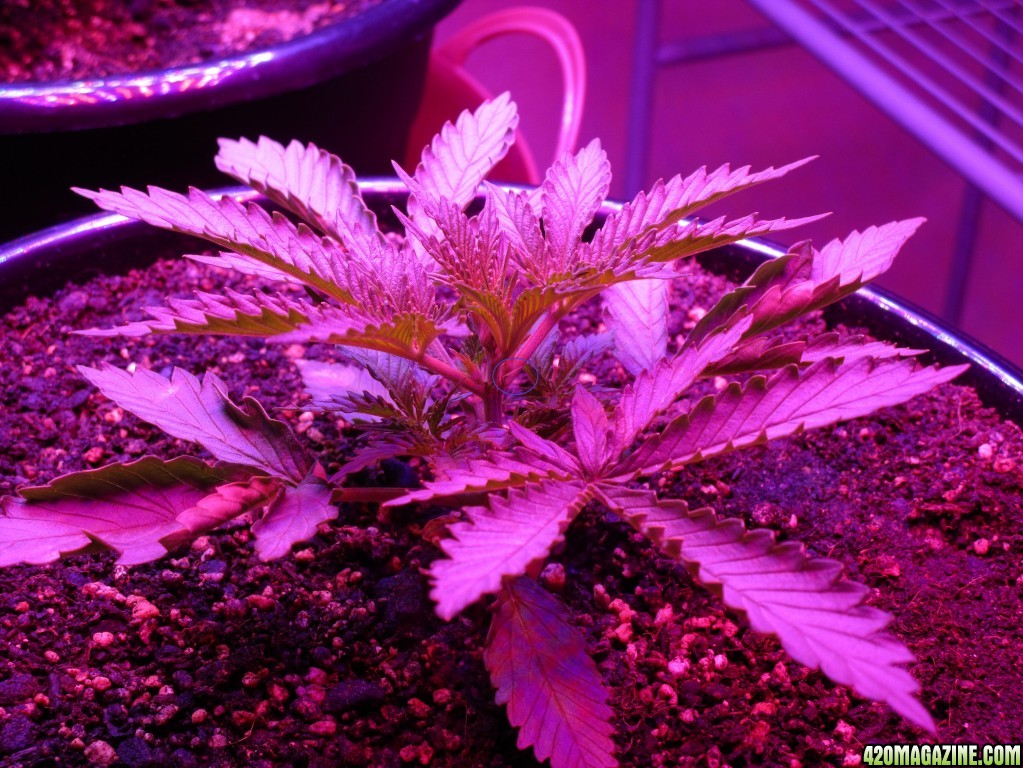
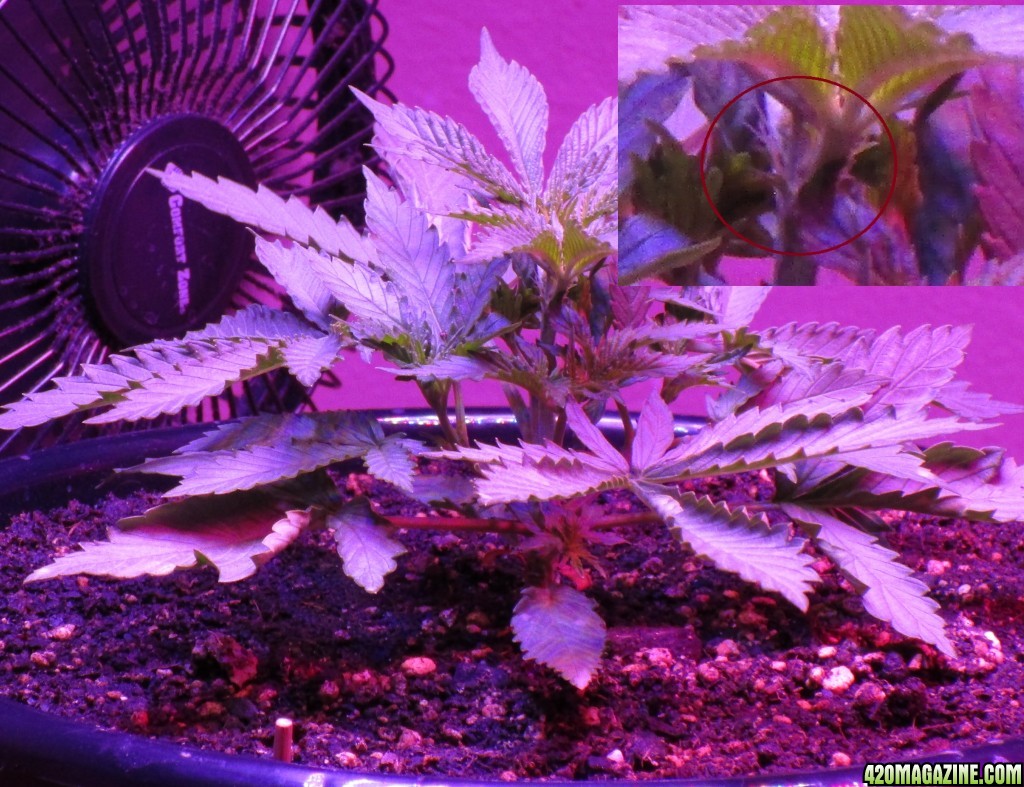
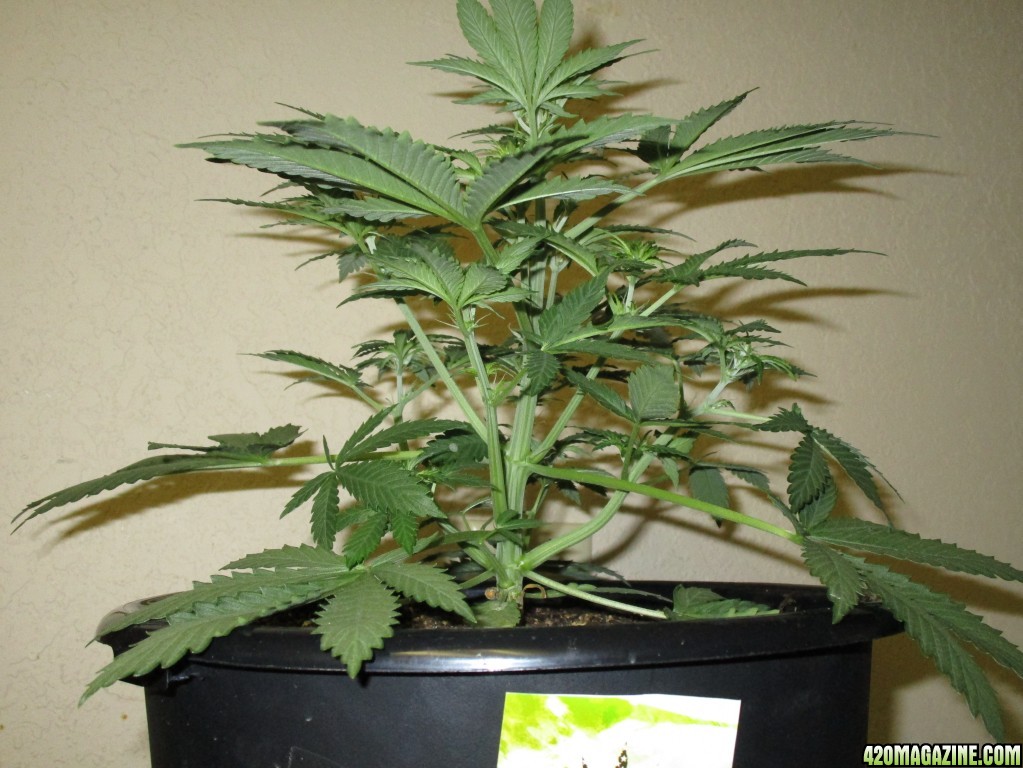
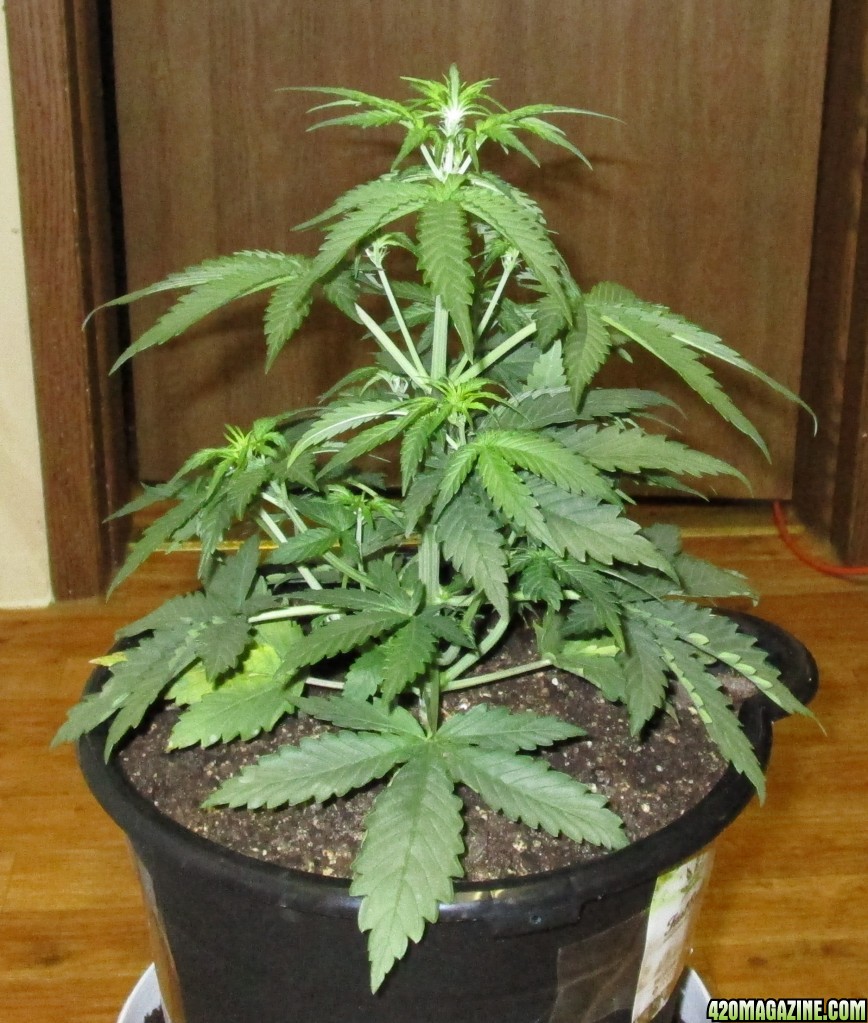
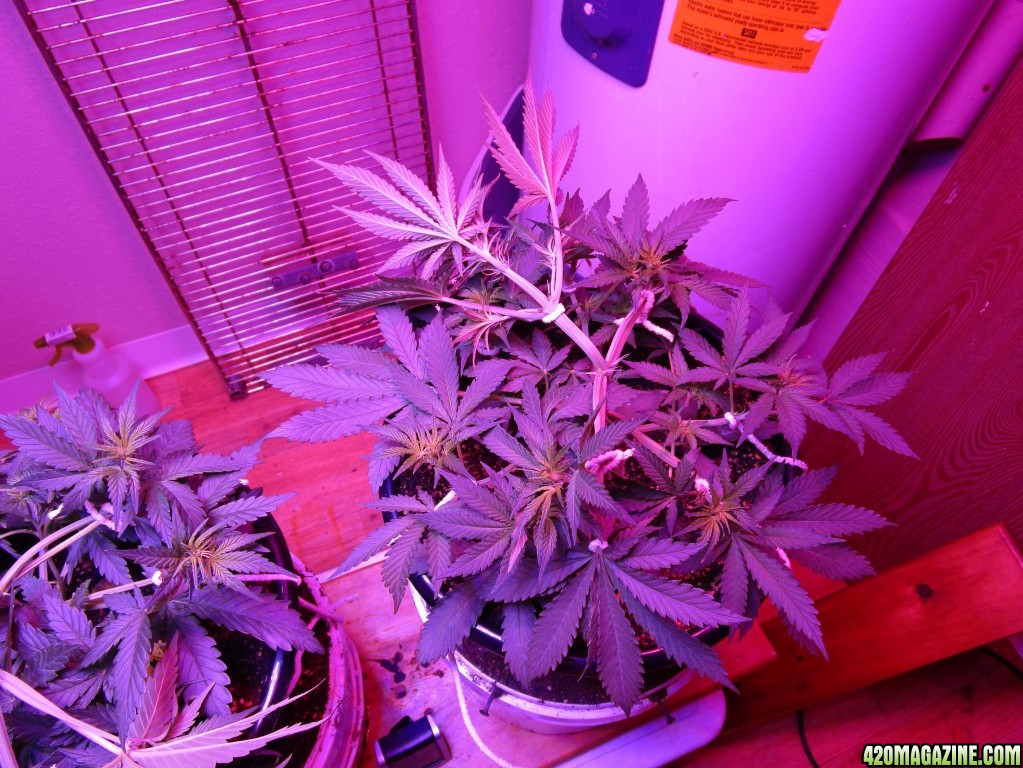
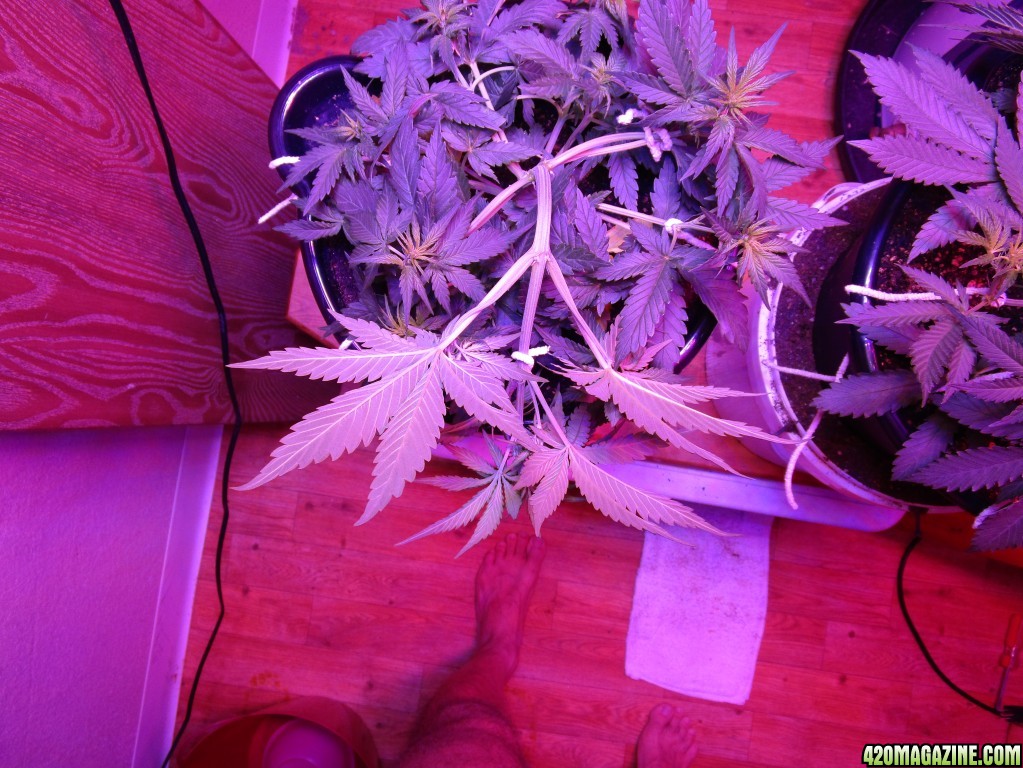
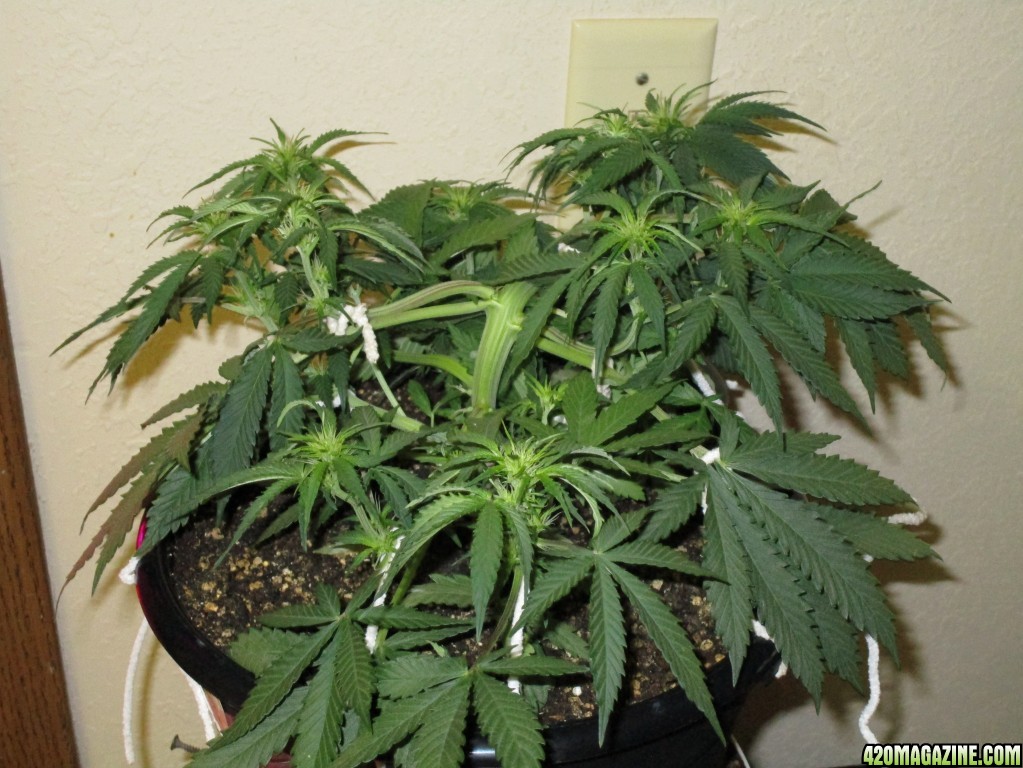
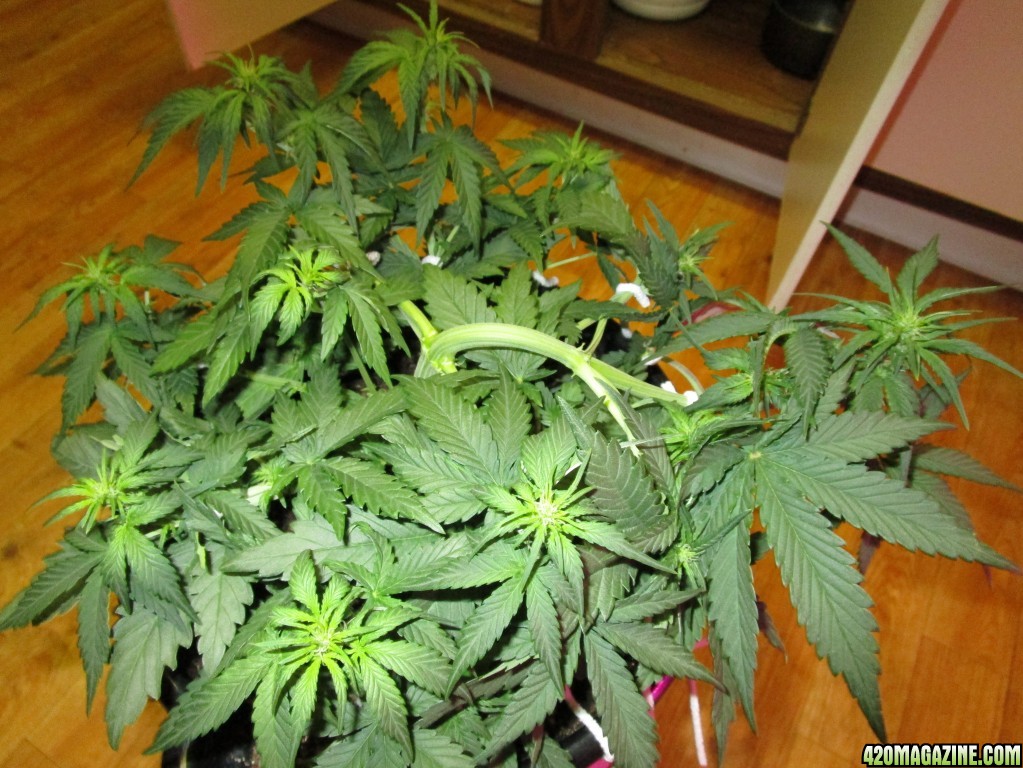
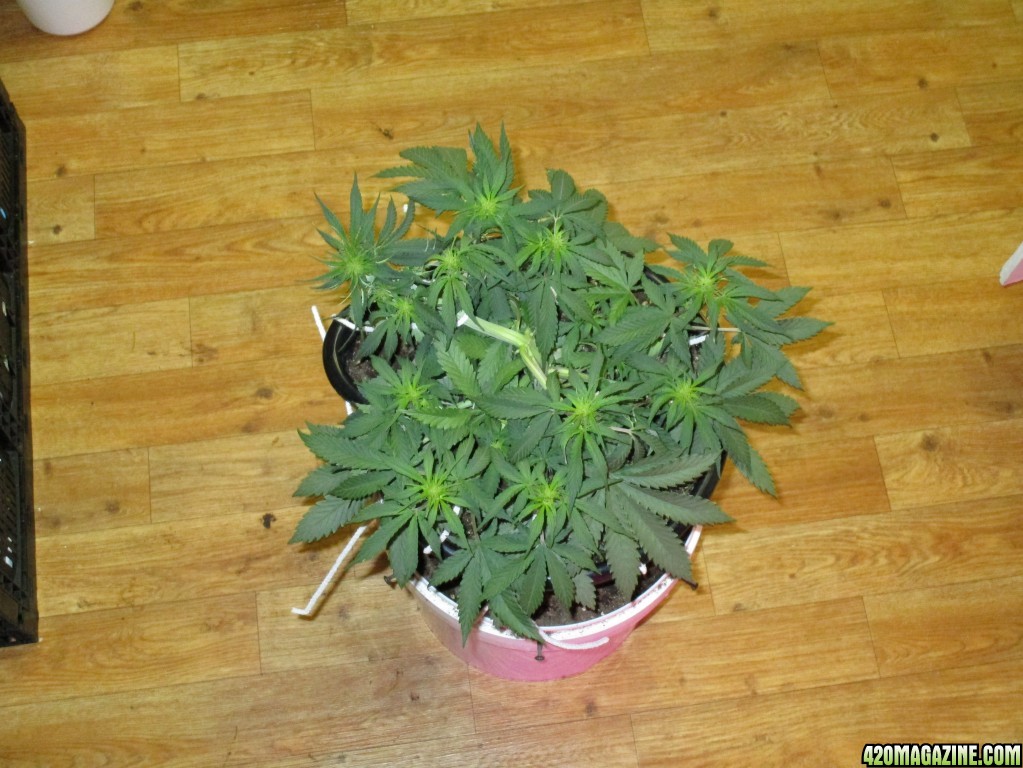
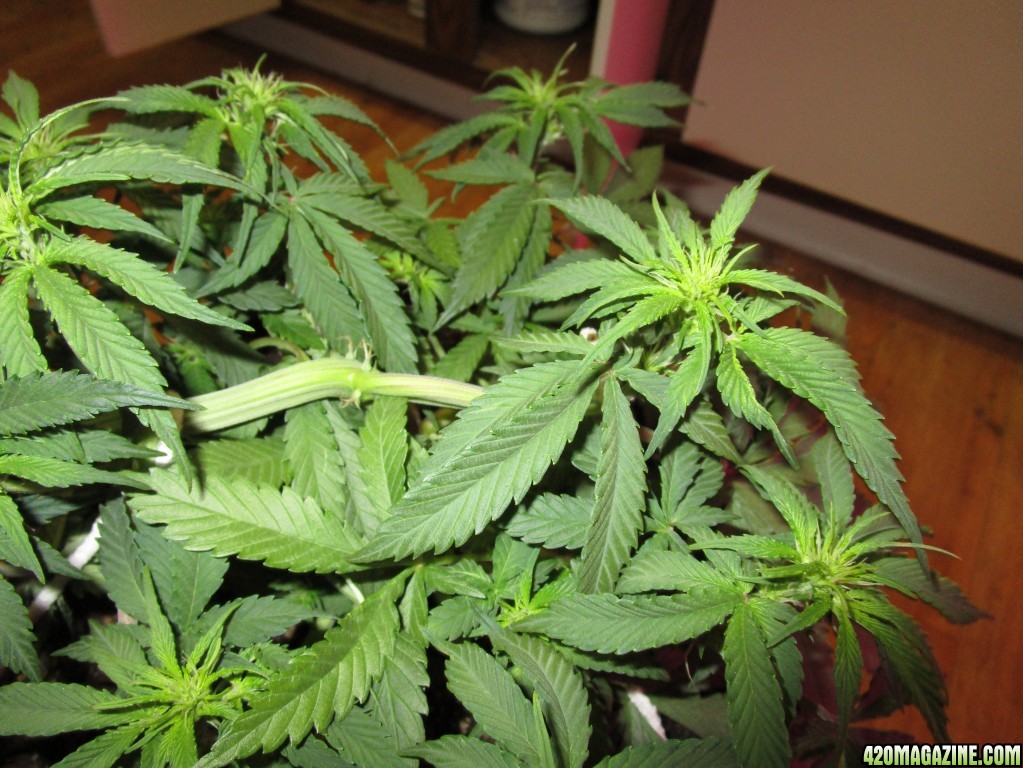
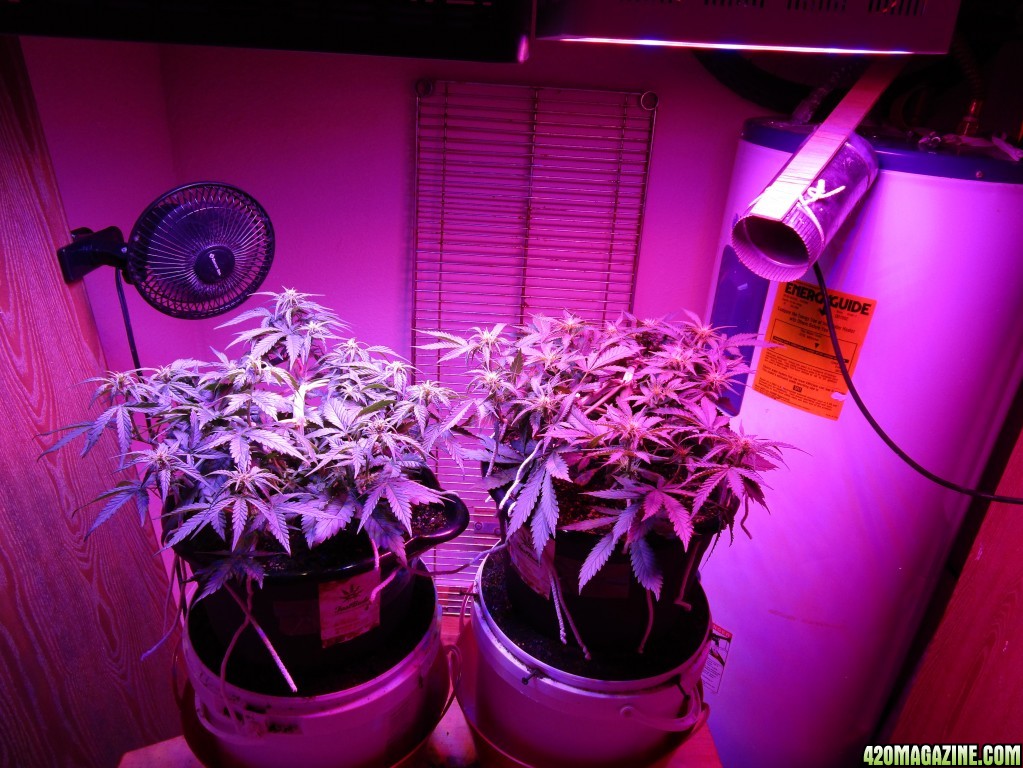
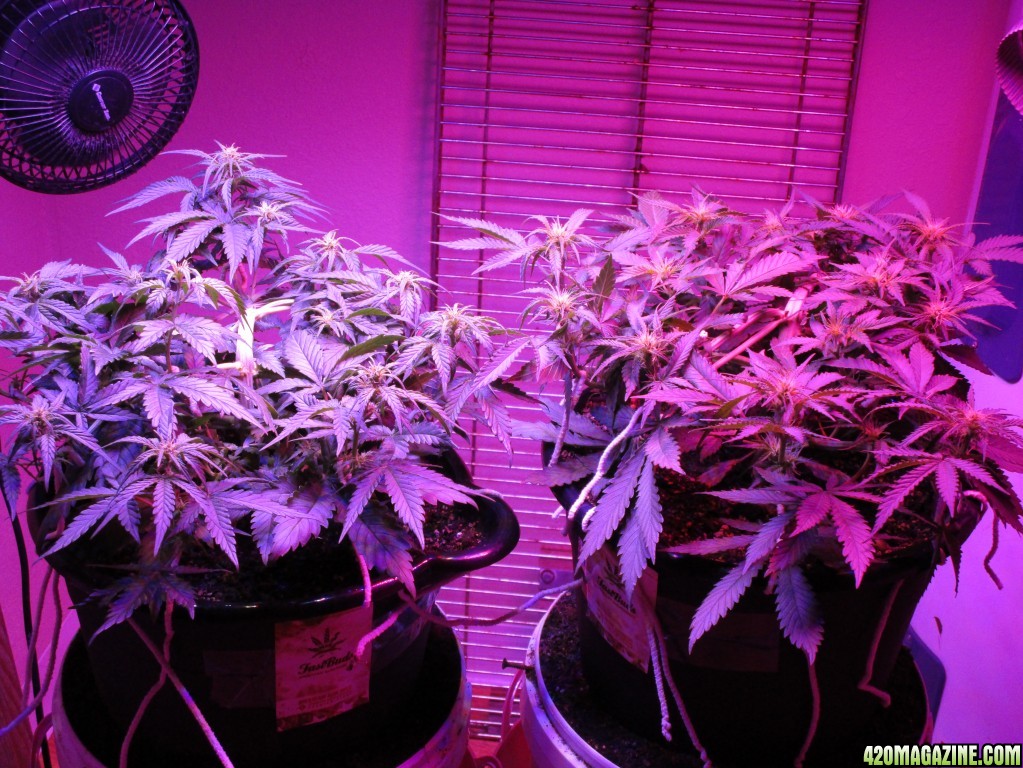
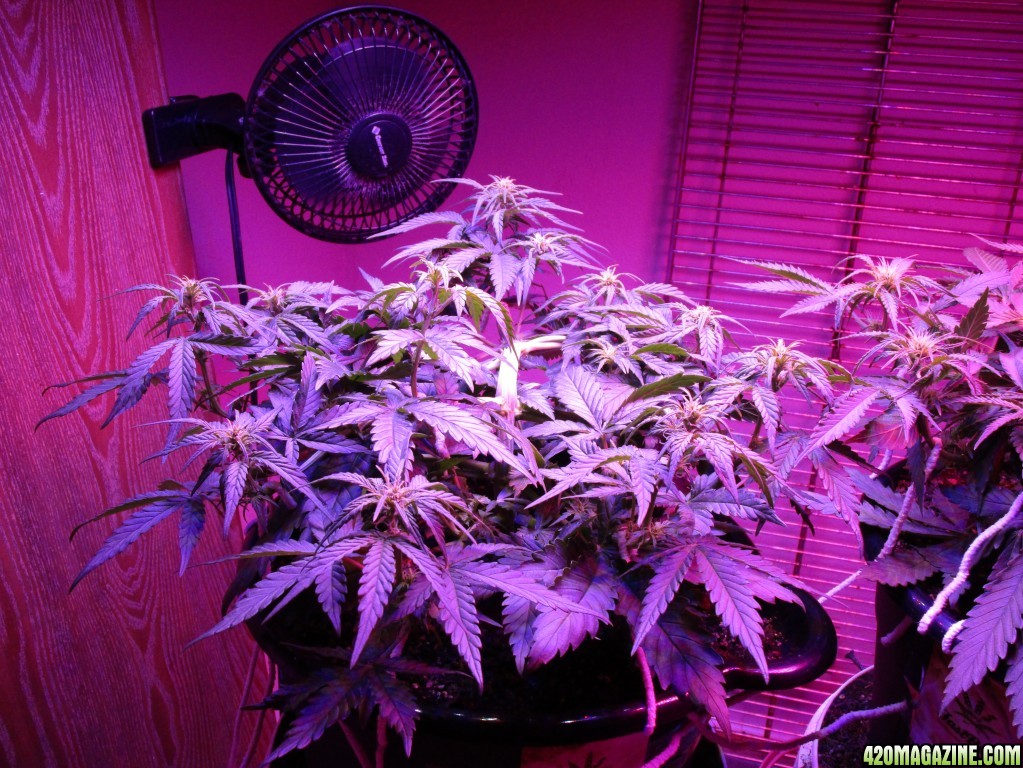
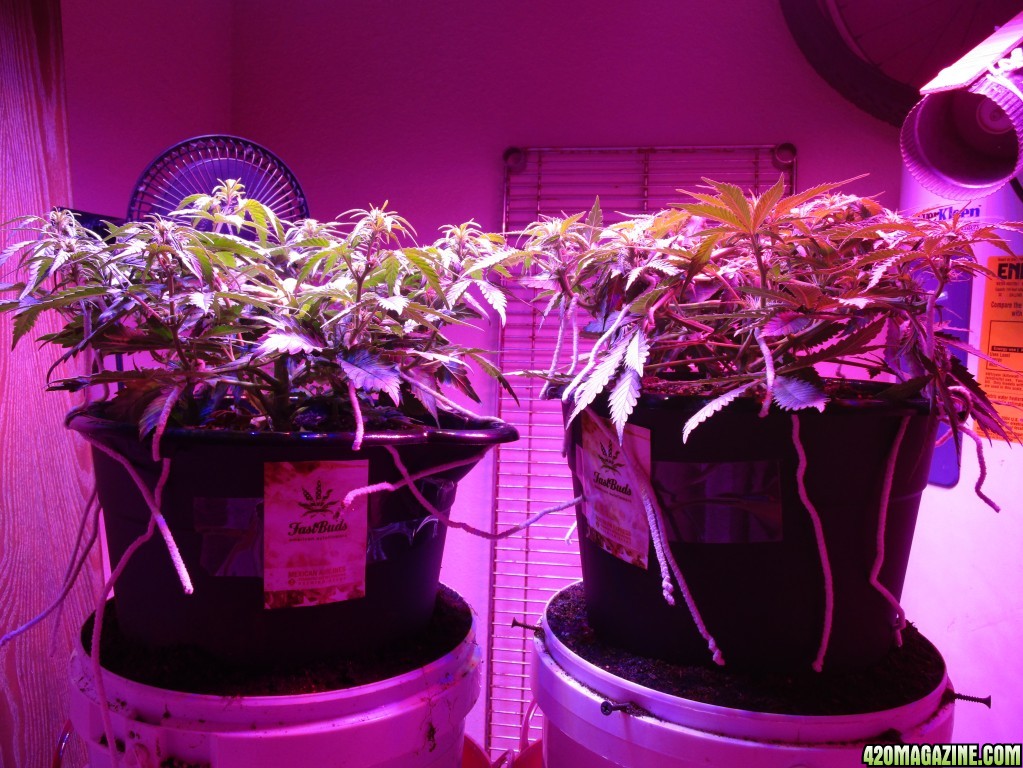
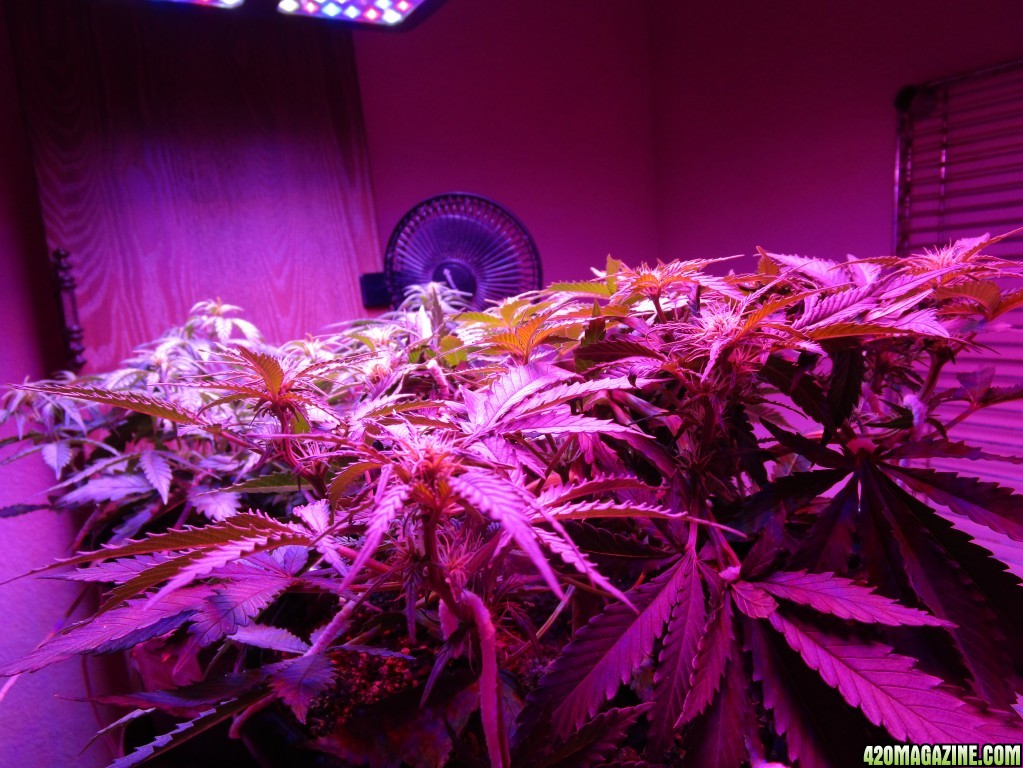
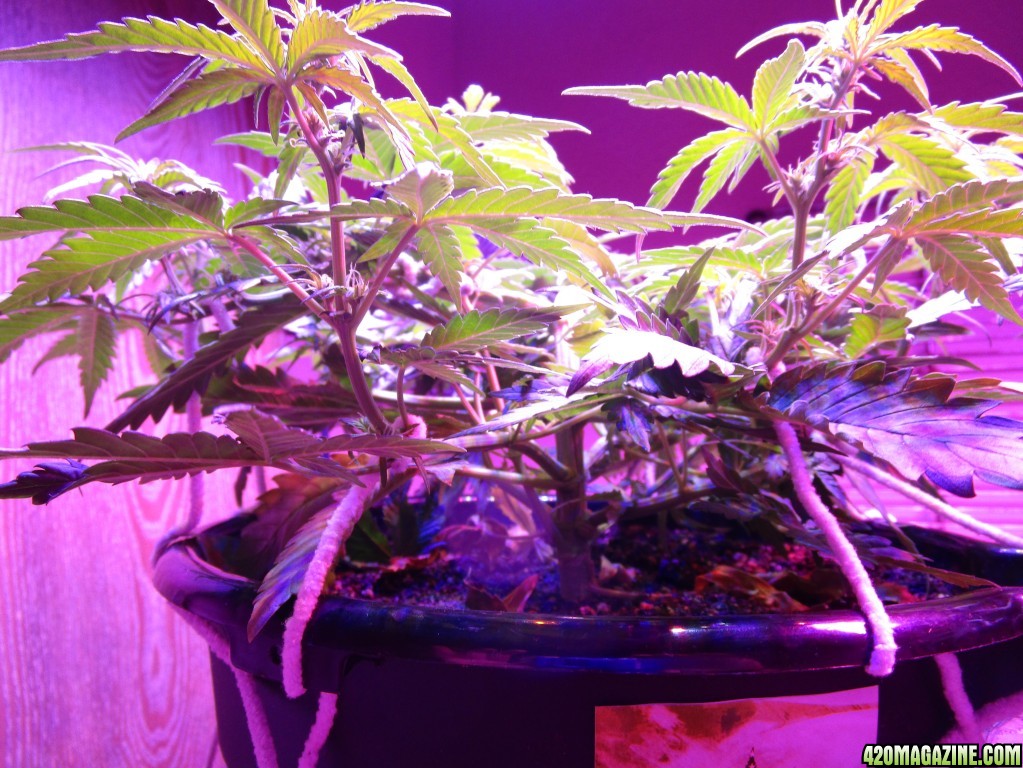
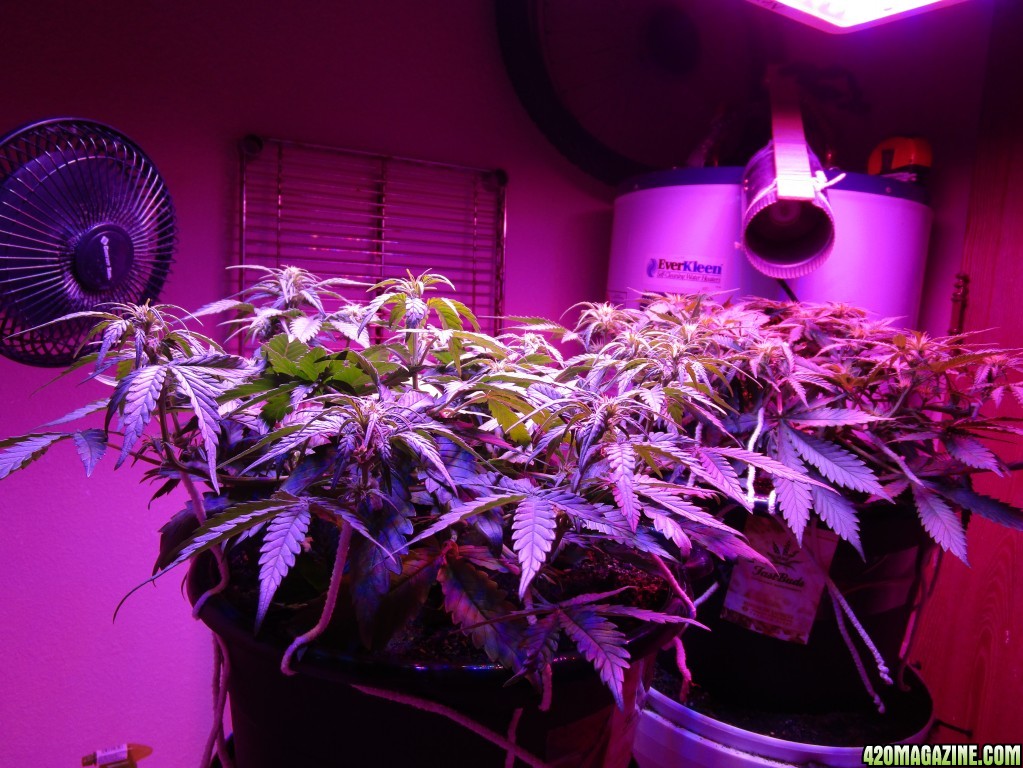
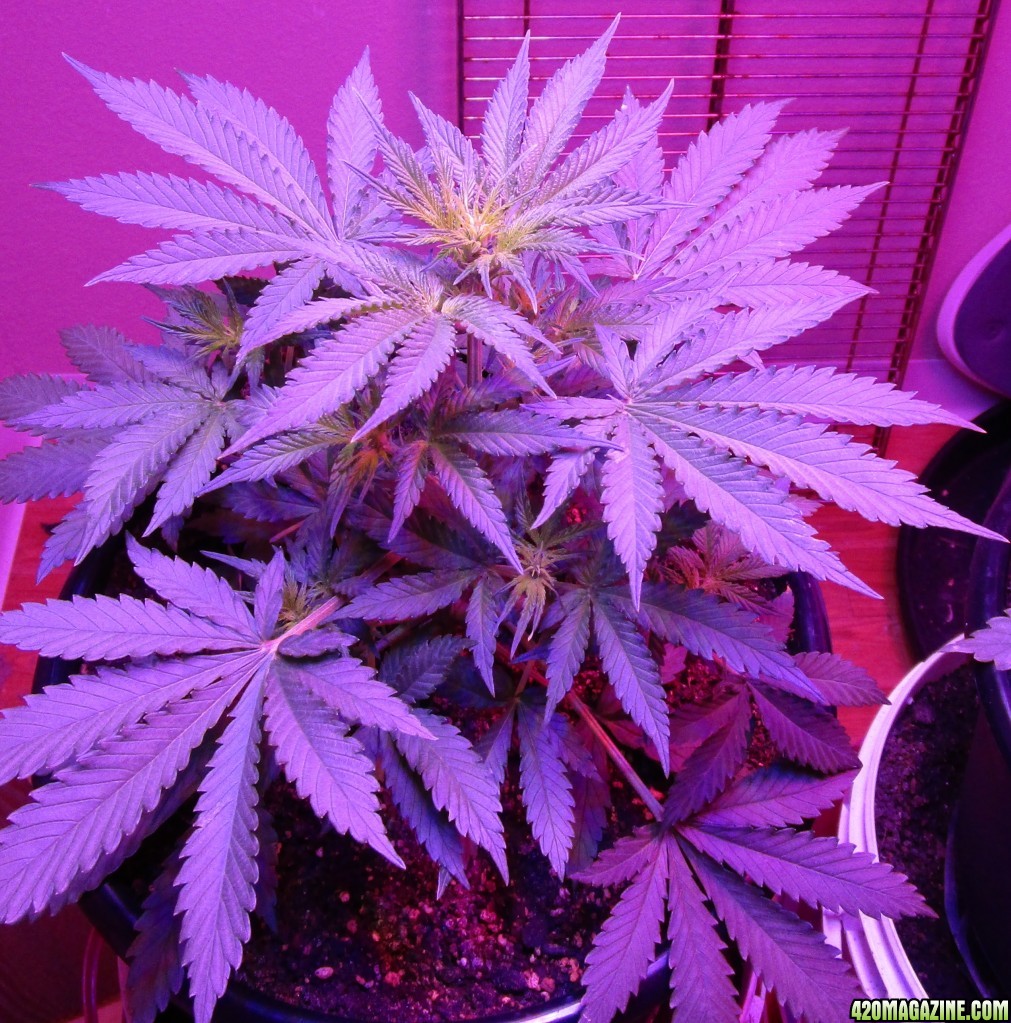
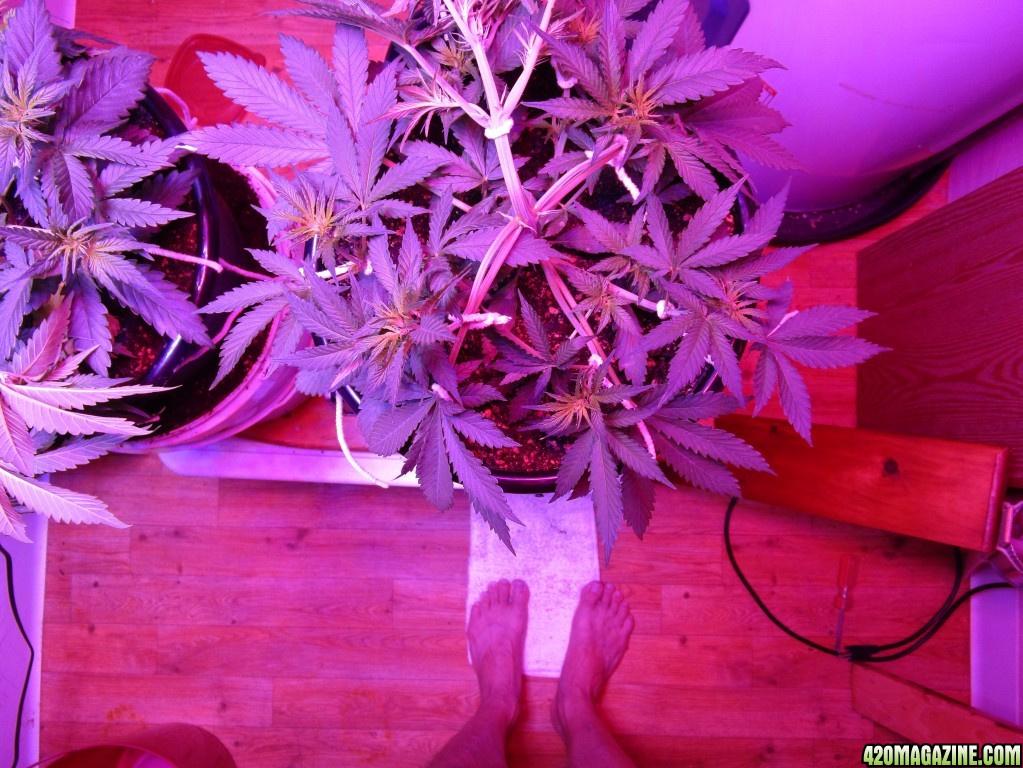



















 I also just bought some ph perfect grow, micro, and bloom, and it will arrive in the start of this week, and maybe that will also increase it's growth.
I also just bought some ph perfect grow, micro, and bloom, and it will arrive in the start of this week, and maybe that will also increase it's growth.

